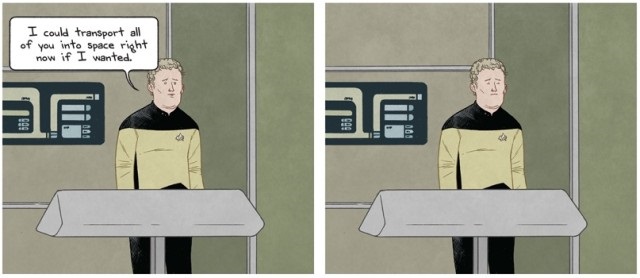
Need more ST:TNG-related humor? io9 also recently pointed the way to this amusing webcomic about Chief O’Brien’s daily grind (before getting reassigned to Deep Space Nine.) Can an actual honest-to-goodness Colm Meaney cameo be far behind?
Haunting the Web Since 1999

Need more ST:TNG-related humor? io9 also recently pointed the way to this amusing webcomic about Chief O’Brien’s daily grind (before getting reassigned to Deep Space Nine.) Can an actual honest-to-goodness Colm Meaney cameo be far behind?
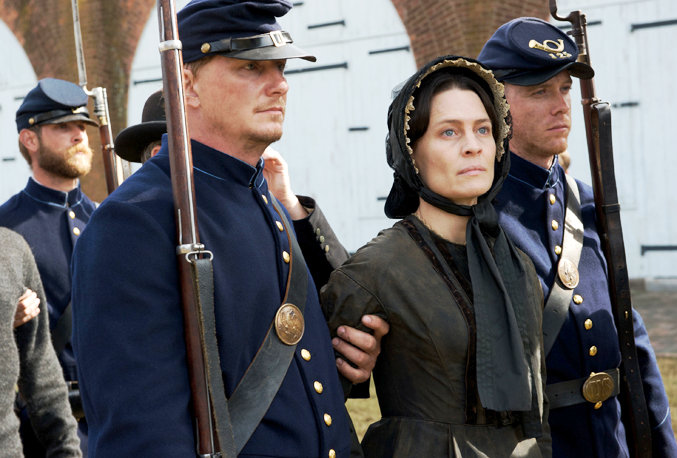
The good news is The Conspirator is nowhere near as preachy and inert as Redford’s last attempt at liberal muck-raking, Lions for Lambs. (I’ll confess I don’t have much patience for didactic message movies that bray at me to embrace opinions i already hold — See also Paul Greengrass’ Green Zone.) Nonetheless, this film still occasionally suffers from the same mix of well-meaning blandness and dramatic torpor that characterizes almost all of Amistad, Steven Spielberg’s similar 19th century courtroom exercise: The values being reified are all laudable, to be sure, but the story as told is strangely lifeless (and I say that as someone who probably enjoys the genre of movies-to-be-shown-in-high-school-history-when-the-teacher-is-out more than most.)
Fortunately, the movie grew on me after awhile. Its depiction of broader Washington DC often feels stagy, and some of the acting support here doesn’t help matters. (As Surratt’s daughter Anna, Evan Rachel Wood overdoes it in her every scene, and the very 21st-century Justin Long is just miscast here as a Union veteran.) But as the lens of the story narrows down to the nitty-gritty of the court case in its middle hour, The Conspirator finds a surer footing. At its best moments, Redford’s film feels like an episode of Law and Order: Civil War Unit, one whose resonances — military tribunals, indefinite detentions, victor’s justice, and whatnot — still feel “ripped from the headlines.”
After establishing that our protagonist here, Frederick Aiken (James McAvoy, with an impressive American accent — he should help out his countryman Ewan) is a Union war veteran wounded in his nation’s service, The Conspirator begins with the terrible crime that will concern us. On the night of April 14, 1865, only five days after Lee’s surrender at Appomattox, several men attempt to kill President Lincoln, Vice-President Johnson, and Secretary of State Seward, with mixed results. Seward manages to survive some nasty stab wounds, Johnson’s killer loses his nerve…but, as we all know, the flamboyant actor-turned-assassin John Wilkes Booth manages to kill the 16th President of the United States in cold blood. It is a horrible act of treason, the first assassination America has ever seen, and, make no mistake, everyone involved will pay.
And so, under the direction of Secretary of War Edwin Stanton (Kevin Kline, only slightly less Cheneyesque than Richard Dreyfuss in W) the conspirators (minus Booth, who is shot during capture) are rounded up and put on, for all intent and purposes, show trial — one headed by military men and quite clearly designed to come back with guilty verdicts. (FWIW, this film mostly elides over the Manhunt part of the story.) Nonetheless, according to that quaint old Constitution, even such dastardly criminals as these deserve defense counsel, and ultimately the young Union lawyer we met at the outset is roped into defending Mary Surratt (Robin Wright) by his mentor, Maryland senator Reverdy Johnson (Tom Wilkinson).
Captain Aiken takes to his new position reluctantly, especially since he feels pretty certain that Surratt — the proprietress of the boarding house where the conspirators plotted — is guilty as all Hell. But as he learns more of Surratt and her pious Christian, Ur-mother ways, he starts to wonder if maybe she’s just taking the fall for her son John (Johnny Simmons of Jennifer’s Body), who is still on the lam. And, as he grows ever more sick of the obvious railroading happening at trial under the direction of Judge David Hunter (Colm Meaney) and prosecutor Joseph Holt (Danny Huston, doing his officiously sinister bureaucrat thing), Aiken becomes a convert to his duties, even as proper Washington society begins to shun him for seeming to take on the Confederate cause. Sometimes a man has to make a stand, etc. etc.
I don’t know much about the Mary Surratt trial other than what Wiki has to offer, so I can’t tell you if Redford and screenwriter James Solomon have done justice to the specifics of the story — It seems to have a versimilitude about it, at any rate. But one place where I thought The Conspirator faltered is in establishing the Big Picture. True, the film begins grimly with Lincoln’s assassination — hard to fault it there, I suppose. But particularly once the courtroom scenes take hold, it doesn’t do a very good job of putting everything in emotional context — that all of this is happening mere days and weeks right after the close of America’s bloodiest war. (Nor, for that matter, is slavery mentioned.) And so, while the Law and Order aspects of the story are often compelling in their own right, the trial also feels flat, and strangely disconnected from all the events that put it in motion.
Which is too bad, really. Since, if anything, that Civil War backdrop adds depth to the viewpoint Redford seemed to be trying to uphold. There we were after four years of bloody war, 600,000 dead and the president assassinated, and Aiken is still taking a stand for the constitutional rights of Mary Surratt — even though an innocent verdict might well put the sides at each other’s throats again. (Contrast this with the cowardly behavior our past two administrations have shown with regard to tribunals, detentions, Gitmo, etc, even though, neither on 9/11 or since, has Al Qaeda ever represented the kind of existential threat to our republic that we faced in 1865.)
Speaking of the Civil War angle: In a way, I admire the shrewdness of this film: It tries to pitch a civil liberties morality play in such a way that the people who will feel most aggrieved about the injustices being shown, civil libertarians notwithstanding, are the folks among us with residual sympathy for the Confederacy — not normally a left-leaning or libertarian bunch. But, let’s get real: They’re not going to see this film, or, if they do, see it as anything other than lefty propaganda. Like Inside Job or Casino Jack and the United States of Money, The Conspirator is for the most part just preaching to the choir. One of the best things you can say about it is that, for the middle hour at least, you may not mind humming along.
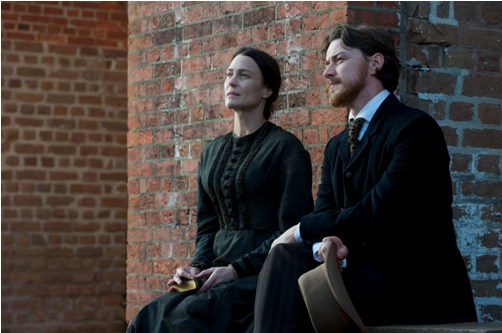
“A military trial of civilians is an atrocity…” Now isn’t that quaint? Union war hero James McAvoy finds himself reluctantly defending Robin Wright (a.k.a. Mary Surratt), a possible accessory to the assassination of Abraham Lincoln, in the trailer for Robert Redford’s The Conspirator, also with Kevin Kline, Justin Long, Alexis Bledel, Evan Rachel Wood, Colm Meaney, Danny Huston, and Tom Wilkinson. Here’s hoping the historical setting here can ease the didacticism that marred Lions for Lambs.
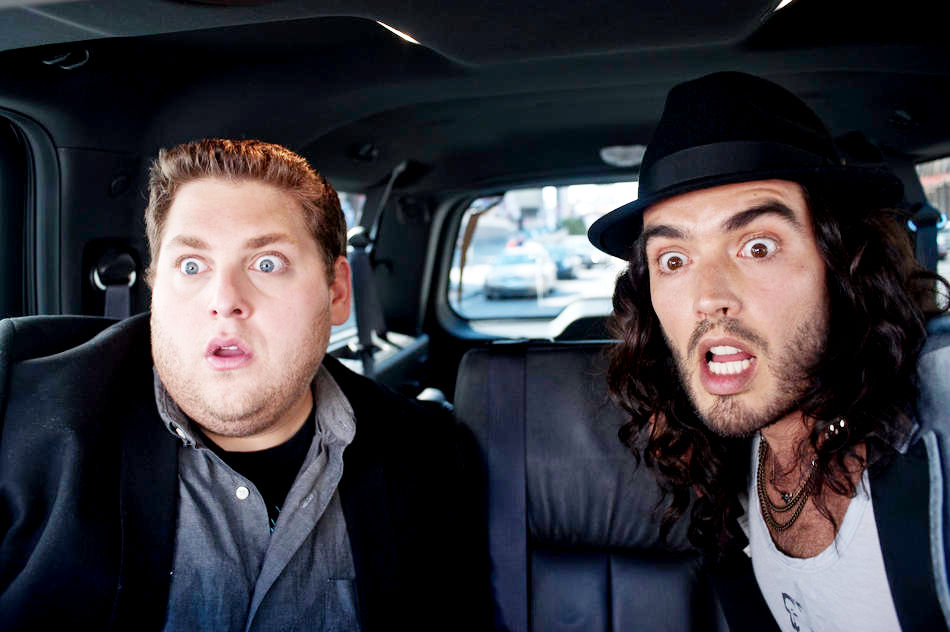
Of those two, I’d say Greek falls more agreeably into the latter than the former camp. (Probably no surprise — Apatow is a producer here, and he and Stoller go back to the days of Undeclared.) For all the rock-star depravity on display during this sordid bender of a road trip, the film feels smarter and less fratty than the Todd Phillips oeuvre. (As our Odd Couple race down a Vegas hallway to escape an amphetamine-fueled P Diddy: “This is the longest hallway of all time!” “It’s Kubrickian!“) And it keeps its aw-shucks Apatow humanism at heart even amid all the thoroughly reprehensible behavior — the binge-drinking, drug muling, public vomiting, green musing, threesomes, jeff-smoking, and whatnot. (In fact, Greek gets positively Lost Weekend-wistful at times, which is not a setting you saw much of in Old School.)
And amid the raunch, Greek also hearkens back to earlier influences. In its basic plot outline, this is sort of a remake of the Peter O’Toole, Mark Linn-Baker comedy My Favorite Year (a movie I saw multiple times growing up, since my grandfather loved it and it was kicking around the house on VHS back when videotapes were still a novelty.) And with its two industry men on a mission, its easy drug use and hero worship, its deft early wise-cracking about music video and celebrity culture, its absurdist pulse, and its ultimate fanboy fondness for all things rock-n-roll, Greek also reminded me of the under-appreciated Cusack-Robbins vehicle, Tapeheads — Aldous Snow, meet the Swanky Modes. (Spinal Tap is pretty obviously in the mix too.)
I should say on a note of full disclosure that Stoller’s brother is a friend and colleague of mine here in town, so I went into Greek predisposed to warm to it and enjoy myself. But, even if there wasn’t any personal connection, I’m pretty sure I would’ve been sold by the first ten minutes or so. After some mild concern that one has wandered into the wrong movie — we at first seem to be in Blood Diamond territory — it turns out we are in fact on the music video set for an atrocious (yet globally-conscious!) new single “African Child,” by ex-rock-god and frontman of Infant Sorrow Aldous Snow (Russell Brand, reprising his role from Forgetting Sarah Marshall.) Talking about his newest magnum opus to the interviewers about, Snow decidedly does not compare himself to an “African White Jesus from Outer Space.” (“Well, that’s for other people to say, really. That I remind them of Christ.“)
All the while, the crush-worthy, genre-friendly Rose Byrne (28 Weeks Later), Sunshine) is vamping and skee-bopping around behind him as Snow’s girlfriend, international pop star Jackie Q — a vaguely cruel, often devastating send-up of, at various times, Lady Gaga, M.I.A., Lily Allen, and Alicia Keys. As with Hot Fuzz, this first ten minutes is so gleefully over-the-top and frontloaded with celebrity cameos that it gives you the sense that [a] folks had a great time making this movie and [b] pretty much anybody might show up over the course of this flick — a feeling compounded by the likes of Pharrell, Tom Felton (nee Draco Malfoy), and Paul Krugman popping up at various times throughout the ride.
Unfortunately for Aldous, “African Child” is very quickly deemed “the worst thing to happen to Africa since apartheid, and that — coupled with Jackie’s absconding away into the arms of Lars Ulrich (“Why don’t you go sue Napster, you little Danish twit!“) — sends him careening off the wagon and back into rock star excess. Enter Aaron Green (Jonah Hill, looking ever more like the late Chris Penn), an inveterate Infant Sorrow fan, now record label guy, who comes up with the grand idea of a tenth anniversary comeback concert for Aldous Snow at the Greek Theater. His tyrannical boss (P Diddy, funnier than you’d think) signs off on the gambit, and so Aaron is sent forth to London to acquire Snow for the gig. Kick up a rumpus, don’t lose the compass — but get him to the Greek on time…
And there you have it — The rest of the movie consists of Aaron going through all manner of hedonism and indignity to get Aldous Snow across the world, on stage, and in-the-zone. Over the duration, this dissolute duo bond, cavort, discuss their girl trouble, hide and remove things in sundry body cavities, and ingest enough drugs and alcohol to kill a small donkey. To be honest, the film does go shapeless at times, and it works best before [obvious spoiler] they reach their final destination city. (Without the road trip and ticking clock giving form to the tale, it feels like it rambles all over the place in the last twenty-five minutes or so.) And some of the characters — most notably Aaron’s sweet but overworked girlfriend Daphne — seem on the underwritten side (partly because she’s played by Elisabeth Moss of Sterling-Cooper-Draper-Pryce, and so we expect her to be given more to do.)
Still, in the end, the film works thanks to the chemistry and comic timing of its two leads, and Brand and Hill have both in spades. (So, for that matter, does the supporting cast — Byrne, Moss, Diddy, and the venerable Colm Meaney as Snow’s gone-Vegas pop.) Your mileage may vary, of course — this would be an easy movie to deem tasteless, and at times, it’s a hard argument to refute — but I still found Greek, like The Men Who Stare at Goats last year, a light, frothy, druggy and funny jaunt sustained by its amiable characters and smart, self-aware writing. Hot funk, cool punk, even if it’s old junk, it’s still rock and roll to me.
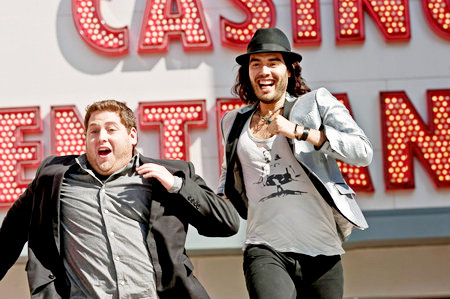
“Redford says he didn’t want to simply re-create Lincoln’s assassination and deals with that mainly as setup. ‘All the President’s Men was very similar, because you had this big historical event taking place, but what people didn’t know was what these two reporters did, digging in under the radar. You didn’t need to show Nixon a lot,’ he says.“
USA Today checks in on the set of Robert Redford’s The Conspirator, about the trial of Mary Surratt, with Robin Wright Penn, James McAvoy, Toby Kebbell, and Alexis Bledel. (This is not to be confused with the long-gestating film adaptation of Manhunt or Steven Spielberg’s seemingly cursed attempt at a Lincoln biopic.)
Hello all. This got sidetracked a bit on account of holiday rest, birthday carousing, and such — Yep, as of yesterday, I’m now 35 years young. (“I’m old, Gandalf. I may not look it, but I feel it…“) In any case, hopefully everyone has had time to check out part I and part II by now. And, just in time for New Years’ Eve, I’ve gone back to the movie-reviewing salt mines to dredge up Part III of the…
[The Rest of the List: 100-76 | 75-51 | 50-26 | 25-11 | 10-1]
[2000/2001/2002/2003/2004/2005/2006/2007/2008/2009]
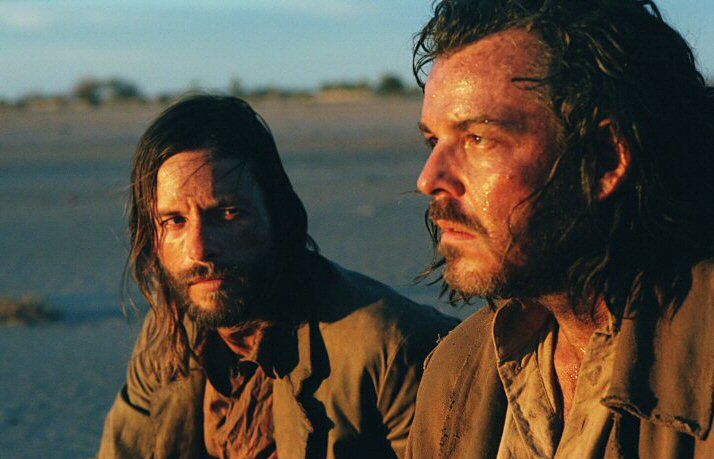
“Australia. What fresh hell is this?” As I noted in my review of his 2009 follow-up, The Road, John Hillcoat’s The Proposition was a movie I watched via Netflix late one night and felt like I had dreamed. There’s something very strange and ethereal at work here in this Nick Cave-penned western about an outlaw (Guy Pearce) sent to kill his ne’er-do-well brother (Danny Huston) by an equally ne’er-do-well lawman (Ray Winstone). (Well, I think that’s what it was about…I have a vague recollections of a filthy John Hurt talking his way in and out of trouble quite a bit too.)
Nonetheless, something about The Proposition makes it feel weirdly ancient and Biblical, like poetry and prophecy wrestling it out over an Outback campfire. I liked The Assassination of Jesse James by the Coward Robert Ford quite a bit — it’s on my almost list. But I get the sense that, in its heart of hearts, The Proposition is the movie Dominik’s sprawling epic really wanted to be.
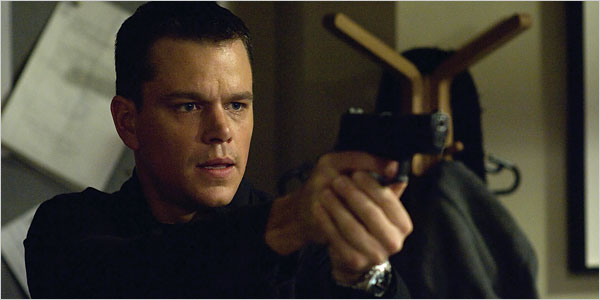
| From the year-end list (I): “Another surprise…Matt Damon is believable, Chris Cooper and Brian Cox do excellent character work here, and Franka Potente and Clive Owen help lend the film an authentic European flavor that’s gone completely AWOL over in the Bond series…If the first film’s any indication, I’d rather see another Bourne than another Bond“
From the original review (II): “[T]hankfully The Bourne Supremacy is just as intelligent, fast-paced, gritty, and near-plausible as the first outing…The surprise here is how well everything’s executed — until the last fifteen minutes or so…the film moves at a kinetic, captivating clip.“ From the year-end list (II): “[A] better Bond than anything we’ve seen in the past 20 years. Paul Greengrass’ shakicam work here bodes well for Rorschach in The Watchmen.“ From the original review (III): “If you see him, say hello, he might be in Tangier. Or Paris, Madrid, London, New York, Moscow…uh, sir, we have Jason Bourne popping up all over the grid here. Shall I put it on One?…[I]t’s clear that Greengrass is firing on all cylinders right now. I was already impressed with him, but Bourne further suggests that Greengrass is among the very best directors working today — Let’s hope he shares with us more surveillance intel in very short order.“ From the year-end list (III): “The third installment of the Bourne franchise was the best blockbuster of the year, and proved that director Paul Greengrass can churn out excellent, heart-pounding fare even when he’s basically repeating himself. Really, given how much of Ultimatum plays exactly like its two predecessors on the page — the car chase, the Company Men, the Eurotrash assassin, Julia Stiles, exotic locales and cellphone hijinx — it’s hard to fathom how good it turned out to be. But Bourne was riveting through and through…You just couldn’t take your eyes off it.“ |
True, Agent 007 received a much-needed 21st-century reboot in the Oughts with Casino Royale. But the decade belonged to Matt Damon’s Jason Bourne, who yielded three exemplary cloak-and-dagger entertainments between 2002 and 2007. The Bourne Identity was the highlight of director Doug Liman’s decade, wherein he established the international flavor and CIA-professional mien that would characterize the rest of this spy trilogy. And Paul Greengrass brought it home, first with The Bourne Supremacy and then The Bourne Ultimatum. I know Greengrass’ brand of kinetic shaky-fu isn’t for all action tastes, but I find it totally absorbing. And, hey, while Bourne III might’ve been a lot like Bourne II in the end, at least there were no invisible cars anywhere in the picture.

| From the original review: “[W]hile I can’t vouch for how well Nolan conceals his own prestiges from the audience here, I found the movie a dark, clever, and elegant contraption, one that suggests razor-sharp clockwork gears and threatening pulses of electrical current, all impressively encased in burnished Victorian-era mahogany. If you’re a fan of Nolan’s previous work, or of sinister mind-benders in general, The Prestige is a must-see film. Either way, it’s among the top offerings of 2006 thus far.“
From the year-end list: “[A] seamlessly made genre film about the rivalries and perils of turn-of-the-century prestidigitation…Throw in extended cameos by David Bowie and Andy Serkis — both of which help to mitigate the Johansson factor — and The Prestige was the purest cinematic treat this year for the fanboy nation. Christian Bale in particular does top-notch work here, and I’m very much looking forward to he and Nolan’s run-in with Heath Ledger’s Joker in The Dark Knight.“ |
Having read the Christopher Priest novel beforehand, I was in on the trick with this movie going in. So I still don’t know how Christian Bale’s putty nose played to the uninitiated. (The nose plays?) Nonetheless, I found The Prestige one of the most satisfying genre entertainments of its year. And, while I haven’t seen it since, I expect this Christopher Nolan conjuration should hold up quite well. (And a special bonus for Nolan’s introducing us therein to one of my current movie crushes, Rebecca Hall.)

| From the original review: “Andrew Stanton’s ambitious, impressive WALL-E is definitely in keeping with the high standard we’ve come to expect from the Pixar gang…That the reach of WALL-E’s ambition ultimately exceeds its grasp in the second hour, when the movie becomes a much more conventional family flick, can’t be held too harshly against the film, I think…Still, after centuries of wandering around by himself, gazing at the stars, the Last Robot on Earth has fallen in love. Did we really need to contrive a second act to top that?“
From the year-end list: “If you saw one movie last year about a boy(bot) from the slums meeting — and then improbably wooing — the girl(bot) of his dreams, I really hope it was WALL-E. Hearkening back to quality seventies sci-fi like Silent Running, Andrew Stanton’s robot love story and timely eco-parable is a definite winner, and certainly another jewel in the gem-studded Pixar crown. I just wish it’d stayed in the melancholy, bittersweet key of its first hour, rather than venturing off to the hijinx-filled, interstellar fat farm.“ |
If WALL-E were just the opening forty-five minutes or so, it’d probably shoot up into the top 25, where it would rest next to another Pixar movie on this list. (Yes, in the immortal words of Yoda, There is another.“) But WALL-E started to lose me once our lovelorn robot left the junkyard and headed into space, and all the Starship Titanic goofiness on the back-end just can’t match the heart of the early going.
Still, in another decade of quality Pixar offerings, the first half of WALL-E was right up there among its finest productions. And, as I said in the year-end blurb above, this was the Slumdog Millionaire story of 2008 that i think will have the most staying power in the end.

While The Fantastic Mr. Fox will no doubt have its advocates in the years to come, the question up until this year has been whether 1998’s Rushmore or 2000’s The Royal Tenenbaums is Wes Anderson’s finest hour. Well, I can take or leave Jason Schwartzman, but it’s hard to bet against Bill Murray or Olivia Williams in a fight. Fortunately, for the purposes of this list, I don’t have to choose between them.
In a way, Tenenbaums is Exhibit A for a lot of Anderson’s usual extravagances, and they would definitely lose their lustre for me by the time The Life Aquatic with Steve Zissou and The Darjeeling Limited rolled around. Still, Tenenbaums works. The various idiosyncracies of each wing of the family don’t seem too belabored, not even the matching tracksuits. The hipster pop — be it Nico, the Velvet Underground, or Elliott Smith — seems pretty well-placed. And all the kitsch — and lordy, there’s a lot of it — still doesn’t quite overwhelm the story, as it would in later Wes Anderson offerings.
Plus, the basic point of Tenenbaums in the end is a sound one: All families are a bit weird when you get right down to it…ok, some more than others. But that doesn’t make them any less family. It’s an argument Paul Thomas Anderson tries to make in pretty much every one of his movies. This Anderson got it right here with The Royal Tenenbaums.

Ok, fair enough, I’m cheating a bit with this double-feature. Aside from their subject matter — both involve the death of Joy Division’s Ian Curtis, the clinically-depressed, epileptic Tory-leaning poet of the post-punk generation — these two films could hardly be any more different. Michael Winterbottom’s 24 Hour Party People, which centers on Factory Records founder Tony Wilson, is mostly farce, one that would introduce a lot of us outside England to the mad genius of Steve Coogan. Anton Corbijn’s Control, on the other hand, is a moody and naturalistic black and white piece following the rise and fall of a tortured artist that Corbijn knew personally, almost thirty years earlier.
Yet, for all their differences, both are superior and resonant films. And, taken together, they suggest how differently two movies can successfully approach the same tale. (Ok, 24 Hour Party People suggests Curtis was overwhelmed by Joy Division’s popularity among British neo-Fascists, while Control pins Curtis’ suicide more on girl trouble and general depressiveness – I tend to think Corbijn is closer to the mark.) Of course, out of the ashes of Joy Division came New Order, and while Bernard Sumner was never really the lyricist that Curtis was, that recombinated outfit has an admirable pedigree over the years as well. Endless talking, life rebuilding, don’t walk away.
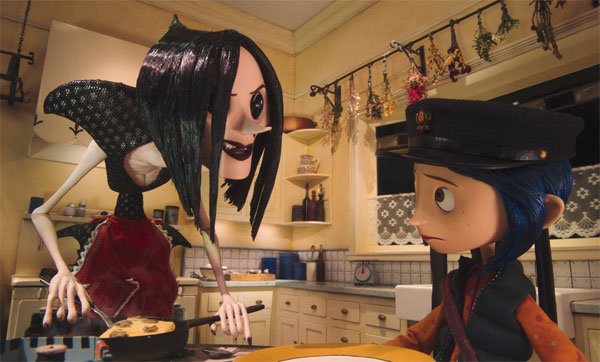
| From the original review: “Made with as much care and attention to detail as the best of Pixar…Selick’s clever Coraline is a children’s fable that moves with purpose, bristles with dark humor, and snaps together with satisfying, text-adventure logic. Like Dahl, Carroll, del Toro, and Rowling, Selick and Gaiman get that kids have more of an appetite for the unsettling and creepy than they’re often given credit for, and that the best fairy tales are often dark, scary places. Coraline is no exception…And in terms of the sheer wealth of imagination and meticulous craftsmanship on display, it’s hard to imagine that very many other films this year will be in Coraline’s orbit“
From the year-end list: “In an auspicious year for both regular and stop-motion animation, Henry Selick’s adaptation of Neil Gaiman’s Coraline was the pick of the litter. It sorta got lost in the early-year shuffle, but Selick & Gaiman’s dark, twisted fairy tale delivered the goods, and hopefully it’ll find more life on DVD. “ |
As I said just above, Henry Selick and Neil Gaiman’s dark stop-motion fable “gets” a simple truth about kids that much conventional children’s fare misses. A lot of little tykes — dare I say most? — are more than a bit twisted. They thrive on weird and scary and grotesque. And Coraline produces — It has the unsettling dream logic and elemental sense of scary that you find in Roald Dahl or the tales of the Brothers Grimm. And the stop-motion looks amazing — It manages to fashion an eerie, home-spun look that was perfect for the story and that CGI-sheen can’t (as yet) muster. Definitely worth a rental.
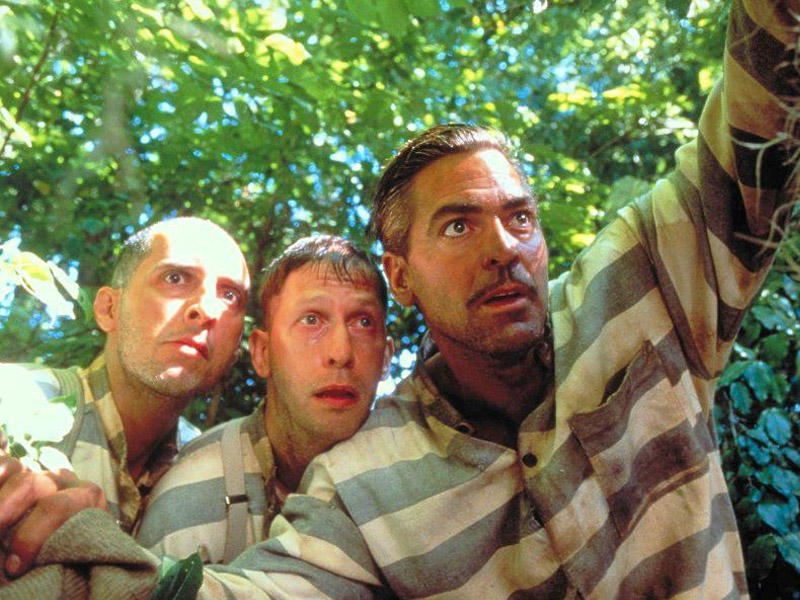
| From the year-end list: “To be honest, I wanted to like it more. Nevertheless, this amusing Coen paean to American folk and Faulknerian absurdity holds its own this year.“ |
Like every other Coen movie, O Brother is a film that rewards repeat viewings. And this Southern gloss on The Odyssey, by way of Preston Sturges, has definitely grown on me over the years. As with so much of the brothers’ output, things that tend to come off as bizarre non-sequiturs at first eventually seem like inspired lunacy once you vibe to it. (“Do not seek the treasure…“) Here’s hoping Burn After Reading ages similarly.
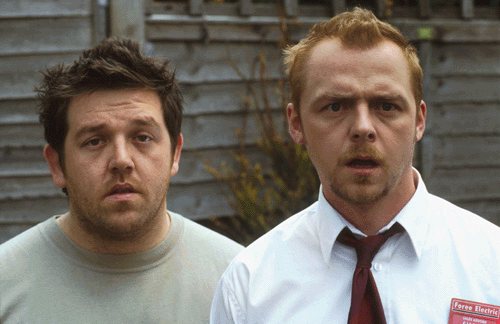
| From the original review: “A friend of mine saw the trailer for Shaun of the Dead and noted it looked like a zombie movie written by The Kinks. That’s actually a pretty good shorthand for this wry, witty film, although it eschews Ray Davies-like bitterness for a romantic comedy sweet that, for the most part, fits quite well. In fact, for the first hour or so, Shaun of the Dead is a total gas, particularly as Shaun and his couch-potato roommate Ed (Nick Frost) verrry slowly get wise to the shambling undead amidst them.“
From the year-end list: “Although it lost its footing shambling to its conclusion, Shaun of the Dead was great fun for the first two-thirds of its run, and it’s now probably my favorite zombie movie (everyone should have one.) A much-needed dry British humor fix to tide us over until Hitchhiker’s Guide.“ |
Zombieland may have aspired to the throne in 2009, but Edgar Wright’s Shaun of the Dead remains the original and undisputed king of the “rom-zom-coms.” Few movies this decade have been as endlessly rewatchable, and, if nothing else, Simon Pegg’s Shaun has provided me with a great Halloween costume over the years. (It’s worked much better than my stab at Donnie Darko, and makes for a great lithmus test to find the movie-people at any given Halloween party right away — not to mention the women-who-find-men-who-look-vaguely-like-Simon-Pegg-fetching, which, as you might have guessed, is a key demographic for yours truly.)
The Pegg-Frost-Wright follow-up Hot Fuzz didn’t make this list, alas, although it is a very entertaining village romp through cop-movie cliches. But here’s hoping that Scott Pilgrim vs. the World and, whenever it gets off the ground, Ant-Man, will make next decade’s top 100, come 2019.
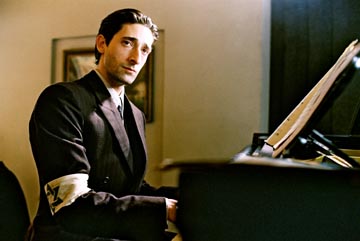
| From the original review: “The first half plays out as a well-done and unflinching (non-Spielbergized) look at life and death in the Warsaw ghetto. (Watching Adrien Brody step over the bodies of starved children on his way to work, I was briefly reminded again of how unbelievably unrealistic and offensive I found Roberto Benigni’s Life is Beautiful.) The second half, however, is a different story. When through a combination of luck and timely aid Szpilman finally manages to escape the ghetto, the film enters (at least to me) novel territory and becomes a strangely riveting and unfamiliar survival story.“
From the year-end list: “A 2002 film that I caught in March of this year, The Pianist is a harrowing and unique survivor’s tale that’s hard to watch and harder to forget (and I can’t have been the only person who thought post-spider-hole Saddam bore a passing resemblance to Brody’s third-act Szpilman.) Speaking of which, I said in my original review of Adrien Brody that ‘I can’t see the Academy rewarding this kind of understatement over a scenery-chewing performance like that of Daniel Day-Lewis in Gangs of New York.; Glad to see I was wrong.“ |
Just as I don’t ever cover Hollywood gossip here at GitM, I don’t really want to get into the kerfuffle that has reignited over Roman Polanski this past year. On one hand, what Polanski did was disgusting, reprehensible, and certifiably criminal, and there’s no getting around that. On the other hand, we just spent much of the past year basking in the afterglow of Michael Jackson’s contributions to music, and the King of Pop, by most plausible accounts, indulged in similar predilections. Imho, what’s good for the goose is good for the, uh, goose.
My point being, their personal lives aside, I still think Thriller is one of the best pop records of the past three decades, and The Pianist is one of the more powerful and engaging entrants in Holocaust cinema out and about. This is the story of the Holocaust outside the camps, and without that telltale Spielberg gloss. For most of the movie’s run, patently craven behavior and sheer blind luck are as crucial life-or-death determinants as anything else. And even if Brody’s pianist gets his own personal Oskar Schindler late in the film, the remorseless existentialism that drives Polanski’s worldview here — and most likely everywhere else, given the personal nature of this flick — has already been well-established by then. Not for the faint of heart, The Pianist feels sadly and uncomfortably true.
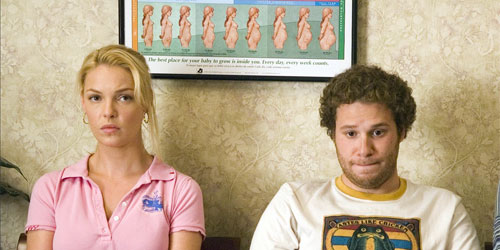
| From the original review: “Well, as you’ve probably heard, Knocked Up is both very, very funny and surprisingly real. For one, it’s got a funky, down-to-earth, DIY, lived-in feel that helps make it, along with Hot Fuzz, the most satisfying comedy of 2007 thus far. But Knocked Up also manages to be rather touching by the end, in a way that feels totally earned. The film doesn’t rely on cutesy baby antics or wildly improbable romantic flourishes to garner your affection, but rather on showing flawed, realistic, well-meaning people trying to make the best out of the complicated situations that make up life, be they modern love, marriage, or an unplanned pregnancy. As such, Knocked Up turns out to be a knock-out, and a very welcome special delivery.“
From the year-end list: “Judd Apatow’s sweet, good-natured take on modern love and unwanted pregnancy was probably the most purely satisfying film of the summer. As funny in its pop-culture jawing as it was well-observed in its understanding of relationship politics, Knocked Up also felt — unlike the well-meaning but overstylized Juno, the film it’ll most likely be paired with from now herein — refreshingly real. “ |
I almost put The Forty-Year-Old Virgin here, which is also very worthwhile in its way. But in a decade where American comedy seemed to be verging toward all-Apatow, all-the-time in its latter stages, Knocked Up was the former Freaks & Geeks auteur’s most fully-realized creation of the decade. (FWIW, F&G came out in 1999.)
It is also, as David Denby pointed out in one of his better moments, the apotheosis of the slacker-striver romance that characterized countless rom-coms and quasi-rom-coms of late, from About a Boy to The Break-Up to, for that matter, the next movie on this list. And more than 40-Year-Old-Virgin and more too than Juno, the other unintended pregnancy fable of 2007, Knocked Up — Seth Rogen’s palatial digs therein notwithstanding — felt like life in the Oughts as it really went down.
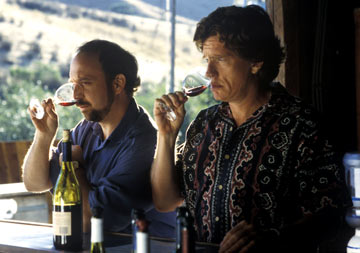
| From the original review: “In sum, Miles is almost completely beaten down by life…so of course he attracts the attention of a smart, beautiful woman (Virginia Madsen) who shares all his important interests and remains fond of him, even and despite his awful behavior. If you can get past this one critical and wholly improbable plot point (and I did, eventually), Alexander Payne’s Sideways is a trip to California wine country well worth taking. The movie basically plays like an approaching-middle-age version of About Schmidt (right down to the unfortunate nude scene), but this seemed a more well-rounded and generous film than its predecessor.“
From the year-end list: “Like a fine 1961 Cheval Blanc, Alexander Payne’s elegiac toast to California wine country and the regrets and indignities of middle-age has a tendency to linger in the senses. Paul Giamatti must tire of playing depressive, barely sociable losers, but he’s great at it here…Sideways isn’t as funny as Election, but it is a memorable trip.“ |
To be honest, I still find it hard to forgive Sideways its central conceit. Speaking of slacker-striver romances, what on earth would Virginia Madsen ever see in Paul Giamatti’s character? But that aside, Sideways was still one of the more memorable indy-dramedies of the decade, and, like wine and O Brother, it too has improved with age. (That being said, I still prefer Payne’s Election, but that was also part of the season of riches that was 1999.)
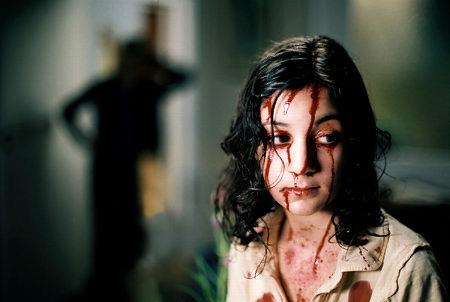
| From the original review: “A Swedish import that combines elements of the age-old vampire mythos with My Girl, My Bodyguard, and Morrissey (hence the title), Let the Right One In moves and feels like a particularly well-crafted Stephen King short story (or perhaps a bleaker version of one of Guillermo del Toro’s Spanish Civil War fairy tales), and definitely makes for a compelling nightmare before Christmas if you’re in the mood for it…[A]t times it feels as naturalistic, character-driven, and hyperliterary an endeavor as In the Bedroom or Little Children. There’s definitely some gore here and there, but as with the best horror stories, Let the Right One In is most frightening in the realm of ideas, and for what it doesn’t ultimately show or explain.“
From the year-end list: “As if living in public housing in the dead of a Swedish winter wasn’t depressing enough, now there’s a nosferatu to contend with… My Bodyguard by way of Ingmar Bergman and Stephen King, this creepy and unsettling tale of a very unsparkly pre-teen vampyrer will leave bitemarks long after you step out into the light.“ |
Y’all can keep your sparkling emo-Mormon vampires, thank you very much. (Although we would like Michael Sheen back when you’re done with him.) This creepy and understated Swedish horror story of 2008 pretty much filled my own quota for teenage nosferatu love for the decade. Yep, it’s a doozy, alright. And, not to get all Glenn Beck up in here, but you may leave as scared of life in Swedish socialist-style public-housing in the dead of winter as of the actual vampyrer at hand.
One word of caution: If you rent this film, watch it with subtitles — I once saw ten minutes of Let the Right One In dubbed and the whole enterprise seemed tonally off. Speaking of which, I’m averse to the idea of the forthcoming American remake, Let Me In, particularly given that it’s being brought to us by the director of Cloverfield. Still, I must concede, it has assembled a darned good cast: Chloe Moretz of (500) Days of Summer and Kick-Ass, Kodi Smit-McPhee of The Road, and Richard Jenkins as the handler, so to speak.
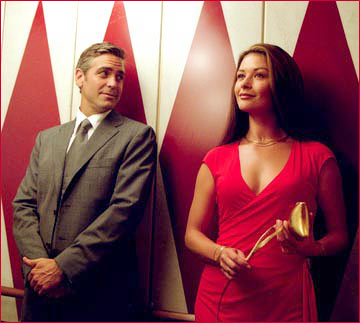
| From the original review: “I’m pleased to report that the Coens’ first foray into full-fledged romantic comedy (although one could argue for The Hudsucker Proxy) is an out-and-out winner. I’d heard earlier that the Coens had diluted their trademark zaniness for the sake of a mainstream audience this time around, but I found the reverse to be true — the brothers have instead juiced up what could have been a tired genre exercise (Imagine this film with Matthew McConaughey, Hugh Grant, Kate Hudson, or Sandra Bullock) with their unique flair and managed to create one of the best, funniest romantic comedies I’ve seen in some time.“
From the year-end list: “I expect I’ll be in the minority on this pick – This more-mainstream-than-usual Coen joint only got above-average reviews, and hardly anyone I’ve spoken to enjoyed it as much as I did. Still, I thought Intolerable Cruelty was a pop delight, 99.44% pure Coen confection…Light and breezy, yeah, but I thought it was that rare breed of romantic comedy that actually manages to be both romantic and hilarious…[I]t’s good to know we can always rely on the Coens for consistently excellent work, and I for one am greatly looking forward to The Ladykillers.“ |
Ok, so The Ladykillers didn’t work out so hot. Still, Intolerable Cruelty is a much-maligned film, in my opinion. Featuring George Clooney at the top of his Coen game and Catherine Zeta-Jones as a natural foil for his throwback, matinee idol looks, Intolerable Cruelty was a rom-com that, I thought, zinged with some of that old-Hollywood, His Girl Friday-type pizazz.
Ok, Geoffrey Rush is over-the-top here, and so are a lot of the jokes, from the Tenzing Norgay, “Heinz, the Baron Krauss von Espy” business to Wheezy Joe’s fatal inhaler problem. (For that matter, Cedric the Entertainer’s part seems tailor-written for Jon Polito, and the Coens eventually re-used the really-old law partner joke in here for the Rabbi Marshak in A Serious Man.) Still, the cat-and-mouse romance at the center of Intolerable Cruelty works quite well, and it’s a great deal of fun to watch play out. Try it, you’ll like it.
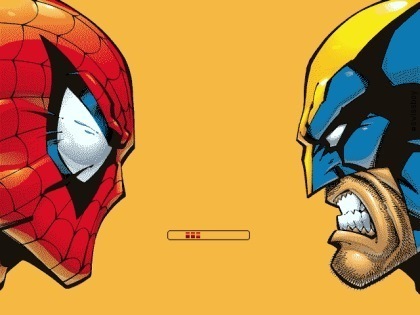
| From the original review (X2): “I’m not sure how it’ll play to people who didn’t grow up on the comic, but last night’s midnight showing of X2 was much better than I had anticipated. Offhand, I can think of three setpieces (Nightcrawler at the White House, the assault on the mansion, and Magneto’s escape) that were the closest thing to fanboy pr0n I’ve seen in ages (LOTR notwithstanding), and that’s not counting all the great little flourishes and knowing winks throughout…Sure, the film drags a bit in the last twenty-five minutes or so (as they set up X3), but overall Singer & co. hit this one out of the park.“
From the year-end list (X2): “Laugh if you want, but I can’t think of any other movie where I had more fun this year. Arguably the most successful comic film since Superman 2, X2 improved over its rather staid predecessor in every way you can imagine…X2 was ripe with moments that seemed plucked directly out of the comics, if not straight out of the fanboy id. To me, my X-Men.“ From the original review (S2): “Here he comes, watch out bud. He’s got genetically engineered blood…and a frozen run of bad luck like you read about. After a series of underwhelming summer films so far, Spiderman 2 is a happy surprise, and a distinct improvement on the decent original. After an up-and-down first outing, both Sam Raimi and Tobey Maguire (as well as the gaggle of writers on board, among them Michael Chabon) have clearly settled into the rhythm of Peter Parker’s struggle-filled existence, and the result is the most enjoyable and faithful comic book adaptation this side of X2.“ From the year-end list (S2): “A definite improvement on the first adventure of your friendly neighborhood wallcraller, Spiderman 2 was a perfectly made summer film that stayed true to the spirit of Peter Parker. Along with X2, this is the gold standard for comic book-to-film adaptations right now.“ |
Eh, you know, in the end, I just couldn’t decide. With the onerous origin stories out of the way in each of their respective first films, Bryan Singer’s X2 and Sam Raimi’s Spiderman 2 were both a chance to let these beloved characters’ freak flags fly. And, taken together, they were the highlight of Marvel movie-watching in the Oughts. Even more than Batman’s much-heralded second outing this decade (still ahead of us on this list) there are scenes in both X2 and Spiderman 2 that feel like four-color panels come to life, from Spidey crawling on the ceiling while talking smack to Doc Ock to Magneto chuckling with glee while floating away from his until-recently-inescapable glass prison.
Both franchises hit a serious wall in their third outings, of course — the poor, long-suffering mutants more so than our friendly neighborhood wallcrawler. Still, both X2 and Spidey 2, like Stephen Norrington’s Blade, Jon Favreau’s Iron Man, and hopefully Kenneth Branagh’s upcoming Thor, proved that certain Marvel franchises can be very translatable to the screen when left alone in the right hands.

| From the original review: ““I’m an old broken-down piece of meat and i deserve to be all alone. I just don’t want you to hate me.” If that’s your man, then tag him in: The final and best film of last Friday’s four, Darren Aronofsky’s The Wrestler is a downbeat, moving, and resonant character study of a man past his moment. If Frost/Nixon was the ‘feisty underdog takes on the champ’ Rocky movie of the day, The Wrestler captured the other half of that famous story — the aging athlete shuffling around his ‘real’ life, looking for any place he can make sense of himself outside the ring…I wouldn’t cry foul if The Wrestler manages to pin down Oscars for Rourke and/or Tomei, and it’s too bad Aronofsky got locked out of Best Director contention this year — dabbling in the ‘rassling form has clearly been good for him.“
From the year-end list: “Have you ever seen a one-trick pony in the fields so happy and free? Me neither, to be honest, but Aronofsky’s naturalistic slice-of-life about the twilight days of Randy “the Ram” Ramzinski was likely the next best thing. I don’t know if Mickey Rourke will experience a career resurrection after this performance or not. But he won this match fair and square, and nobody can take it from him.“ |
Displaying an understatement and naturalism one wouldn’t guess he possessed after Pi, Requiem for a Dream, and The Fountain, Darren Aronofsky hit one out of the park with The Wrestler, thanks in large part to Mickey Rourke’s turn as, well, Mickey Rourke. With key support by Marisa Tomei (who had a much-better decade than 1992’s My Cousin Vinny would ever have predicted), The Wrestler was an-almost perfect match between actor and role, and a small but very effective movie about the indignities accompanying an aging and forgotten warrior’s latter days. Another round to the Ram.

| From the original review: “A taut, minimalist “men-in-combat” thriller that immediately goes up on the top shelf of Iraq flicks next to HBO’s Generation Kill (and, if you’re counting Gulf War I, Three Kings), The Hurt Locker is also that rare thing in the summer of Terminator: Salvation, Transformers, and GI Joe: a war movie for grown-ups…In vignette after vignette, The Hurt Locker ratchets up the suspense by degrees, until you find yourself — like the EOD team we’re following — living out each moment in a heightened state of tension, endlessly waiting for the other shoe to drop. It’s an impressive moviemaking feat, and it helps to make The Hurt Locker one of the best films of the year.“
From the year-end list: “Bombs away, and we’re not ok. Other than Modern Warfare 2 and Generation Kill, this immersive, nail-biting account of an IED team’s travails in the midst of the suck was the best pop culture simulator out there for feeling embedded in Iraq…and stuck at the wrong Baghdad street corner at just the wrong time. And with the tension ratcheting to uncomfortable levels in each of the ordnance disposal scenes, Kathryn Bigelow’s The Hurt Locker…was the action movie of the year.“ |
Of course, warriors’ glory days aren’t all that much better, as evidenced by Kathryn Bigelow’s tense and sparing The Hurt Locker. But, as with Randy the Ram, Jeremy Renner’s Staff Sgt. William James has a taste — some might say addiction — for the ring.
Like the IED team it follows, Bigelow’s movie succeeds mainly because of its attention to detail — not only in ratcheting up the unbearable tension throughout, but in the little moments. Say, for example, the scene with Jeremy Renner in that suddenly ridiculous-looking American supermarket, or his interactions with the locals (both the kid selling DVDs, and the “safe” house he finds himself in later.) The Hurt Locker doesn’t really offer three-part character arcs or easy-to-digest answers — It just puts you right in the thick of danger, with all the fear and excitement that portends. War is a drug, indeed.

| From the original review: “He may seem cruel and indifferent. He may even be vain and jealous (Exodus 20:5.) Still, thank HaShem for the Coens! Like manna from Heaven, the brothers are the cinematic gift that keeps on giving. At this late date, you probably know if you vibe to the Coen’s mordantly kooky aesthetic or not. And if you do, A Serious Man, their sardonic reimagining of the Book of Job set in late-sixties Jewish suburbia, is another great movie in a career full of them…A word of warning, tho’ — Despite the funny on hand here, and there is quite a bit of funny, in a way this world may be the Coens’ darkest yet.“
From the year-end list: “Oy vey. This existential disquisition into wandering dybbuks, sixties Judaica, quantum mechanics, and Old Testament justice was yet another triumph for those devilishly talented brothers from Minnesota. The Job-like travails of Larry Gopnik introduced us to several colorful, Coenesque personages (Sy Ableman, Rabbi Nachtner) and offered vignettes (the Goy’s Teeth) and quotable philosophy (“Receive with simplicity everything that happens to you”) that cinephiles will ponder for awhile to come. The Coens abide.“ |
In another decade of solid-to-great offerings, A Serious Man was Joel and Ethan Coen’s best comedy of the Oughts, particularly for those who like their Coen craziness straight from the tap. Going home to Minnesota for this inquiry into Judaism, mathematics, and the meaning of it all clearly brought out the best in the brothers, and the Coens ended the decade as they began, in lean, fighting trim. Whether it’s Hail Caesar! or True Grit, keep ’em coming, guys. Each Coen movie is a mitzvah for the rest of us.
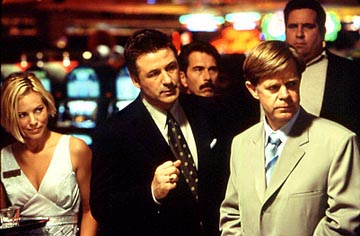
| From the original review: “True, you can guess where this is basically going from the opening moments. The Cooler is ultimately a brief genre exercise in noir romance – It’s not reinventing the wheel. But the wry script takes a few jags I wasn’t expecting, and Kramer, Macy, and Bello succeed in fashioning two lovebirds who veer from playful to amorous to desperate for each other in a way that belies the cookie cutter courtship of so many other films…[I]f you can stomach the occasional burst of Old Vegas-style mob brutality (usually at the hands of Baldwin), The Cooler is a testament to the notion that even perennial losers can sometimes catch a lucky break, and a touching character-driven romance well worth checking out.“ |
Word is the rest of the decade didn’t go so hot for director Wayne Kramer, what with 2006’s Running Scared and 2009’s Crossing Over. (I didn’t see either…did Crossing Over even come out?) But The Cooler, a magical-realist tale about the mystifying blessings of Lady Luck, was one of my favorite movie romances of the Oughts…and one that side-steps the Madsen-Giamatti Sideways problem with a key second-act twist. William H. Macy and the very underrated Maria Bello both bring their A-game to this Vegas fable, and Alec Baldwin does yeoman’s work in the type of meaty character role he’d make his own as the decade unwound. Who knows? Maybe luck was just shining on Kramer that year.
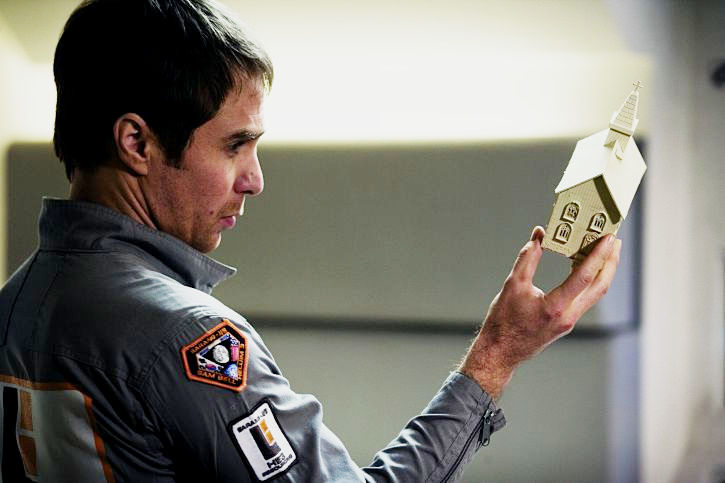
| From the original review: “Granted I tend to be a sucker for these sorts of films, which are far too rare nowadays…Nevertheless, I found Duncan Jones’ low-key, hard-sci-fi rumination Moon to be really, really great — exactly the sort of small-budget ‘big think’ science fiction production that it feels like you used to see a lot more of back in the day. (Silent Running, Outland, even stuff like Capricorn One and Soylent Green.)…Sure, I probably saw this film under ideal conditions for the subject matter — by myself at the 11:45pm showing — but I was riveted by it. And if you’re a science fiction fan (or a fan of Sam Rockwell, who’s showcased here to great effect), Moon is a must-see.“
From the year-end list: “While Michael Bay, McG and their ilk tried to top each other with gimongous explosions this summer, Duncan Jones’ moody, low-key Moon just aimed to blow our minds. A throwback to the seventies big-think sci-fi that has fallen out of favor in the post-Star Wars-era, Moon’s big special effect, other than Sam Rockwell, of course, was its clever ideas. And in a year of hit-or-miss (mostly miss) blockbusters, Rockwell’s quiet two-man show turned out to be the sci-fi extravaganza of 2009.“ |
I feel like I’ve been chatting up this movie quite a bit lately. Still, in case y’all missed the thread, I really dug Duncan Jones’ Moon. It’s all of a piece — A small, well-thought-out, and low-fi flick that just aims to tell an interesting science fiction tale and get you thinking, no more, no less. And amid the sturm und drang of Bayhem and McG’s killer robots and Cameron’s Pandora in 2009, I thought Moon‘s relative silence spoke volumes.
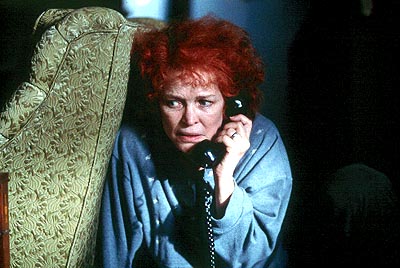
| From the original review: “Technically, Requiem is a masterpiece. Darren Aronofsky pulls out every visual effect and cinematic sleight of hand he previewed in Pi, and then some, to great effect. There are some truly unforgettable moments in this movie, although I must admit that — very occasionally — the technical razzmatazz does get in the way…[D]espite…substantial problems, Requiem is a powerful, enthralling film that invites comparison with such downer classics as A Clockwork Orange and Taxi Driver. Two days later, I’m still mulling it over in my head. I’m not sure if I completely enjoyed it, but I do know I must recommend it.“
From the year-end list: “Powerful, dazzling, and a technical masterpiece, despite the flawed ending. Gets stuck in your head like bits of food get stuck in your teeth.“ |
Ah, Requiem for a Dream. In many ways, I tend to think this flick is wayyyy too over-the-top to be taken at all seriously. And by hyperaccentuating the extreme negatives of drugs here, what with the gangrenous limbs and heroin-fueled whoredom and whatnot in its final act, it sorta misses out on the reasons why people tend to take drugs in the first place. (Hint: They may in fact be enjoyable at times.) In that sense, at its worst moments, Requiem for a Dream can be as hyperbolic, monotone, and quite frankly ridiculous as a Nancy Reagan “Just Say No” ad.
But, for all of its occasional this-is-your-brain-on-drugs ludicrousness, Darren Aronofsky’s Requiem is undeniably a powerful and hypnotic movie experience. Between Ellen Burstyn even outdoing Bale’s American Psycho that year in a just-go-for-broke performance — I still think she got cheated out of the Oscar — and the droning, brain-slashing score by Clint Mansell and the Kronos Quartet (now a staple of movie trailers, thanks to The Two Towers), Requiem has moments that are still burned into my skull a decade later.
And with one clever film conceit, Aronofsky vividly captured one facet of addiction that rings all too true, whether your vice is cigarettes, heroin, TV, or Oreo cookies: Half of the draw — well, maybe not half, but a sizable chunk, at least — is the comfortable routine of a process. I guess that’s why they call it a habit.
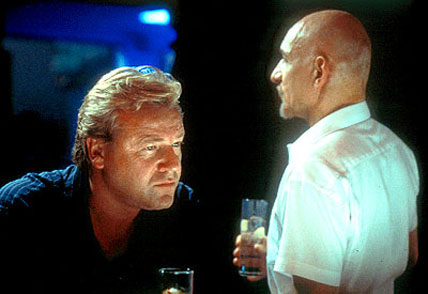
True, Ben Kingsley’s surprising turn as a foul-mouthed Cockney madman is a bit of a gimmick. (In fact, Ralph Fiennes later used said-gimmick himself in 2008’s In Bruges.) Still, Jonathan Glazer’s Sexy Beast was a smart and funny crime thriller that introduced many of us to the venerable Ray Winstone (although Wikipedia now informs me he’s been around since Quadrophenia) and that anticipated Ian McShane’s later breakout/comeback as Al Swearingen of Deadwood. (Spoiler alert: It’s also one of two movies here in the twenties that involve supernatural leporids.) And to my mind, some of the inspired England v. Spain riffing herein just never gets old.
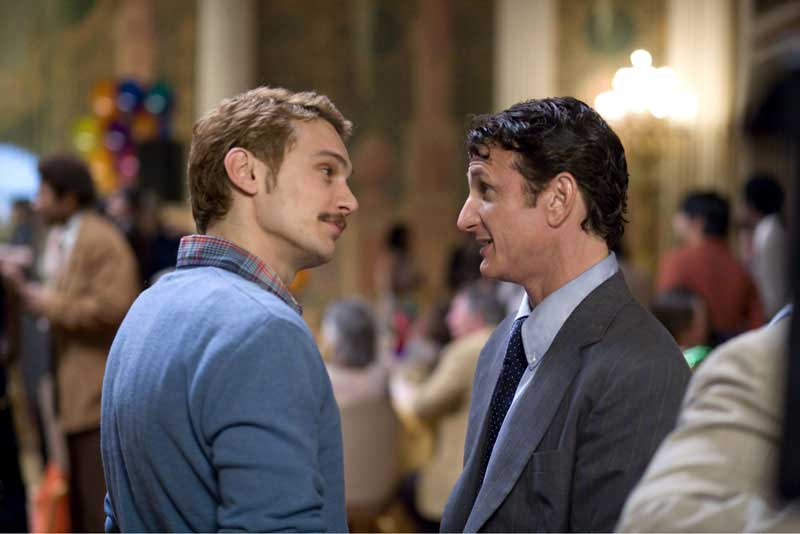
| From the original review: “Arguably the best film about the realities of politics since Charlie Wilson’s War, Milk is blessed with excellent performances across the board — most notably Sean Penn, James Franco, and Josh Brolin, but also supporting turns by Emile Hirsch, Alison Pill, and others. And as a chronicle of a key moment in an ongoing civil rights struggle, Milk also feels like a watershed film of its own in its approach to its gay and lesbian characters. In short, it’s one of the best films of 2008.“
From the year-end list: “What with a former community organizer turned ‘hopemonger’ being elected president — while evangelicals, conservatives and sundry Mormons inflicted Proposition 8 on the people of California — Gus Van Sant’s vibrant recounting of the tragedy of Harvey Milk was obviously the timeliest political movie of 2008. But, in a year that saw entirely too much inert Oscar-bait on-screen in its final months, Milk — romantic, passionate, and full of conviction — was also one of the most alive. While it extends some measure of compassion even to its erstwhile villain (Josh Brolin), Milk is a civil-rights saga that harbors no illusions about the forces of intolerance still amongst us, and how far we all still have to go.“ |
A film that put the lie to Brokeback Mountain‘s Kabuki-theater austerity to some extent, Gus Van Sant’s Milk featured gay couples that were more passionate, more realistic, and, perhaps most importantly, more matter-of-fact than those decidedly not co-habiting in Ang Lee’s Wyoming. Unlike the tragedy of Jake and Heath (or 1993’s Philadelphia, for that matter), it showed mainstream (straight) audiences that being gay isn’t, or at least shouldn’t be, a matter of life and death. In fact, gay couples are a lot like straight couples — varied, heterogeneous, often in lust, sometimes in love.
And its sexual politics aside, Milk was also a smart and insightful film about our American political system as a whole — maybe especially in the year of Candidate Obama and Prop 8, but just as much so today. After all, the struggle for real change in America didn’t end when Harvey Milk got elected. It was only just beginning.

| From the original review: “[A] smart, stylish, and sublimely smooth British crime film that does Guy Ritchie’s Lock, Stock, and Two Smoking Barrels and Snatch one better…Essentially, you know the drill — this is a puzzle film in which you’ll have to listen carefully and learn to distinguish between various delinquents with names like Tiptoes, Kinky, Slasher and Shanks. And, while the final few grifts just get a bit too big to be believable, for the most part the story holds together with intelligence and verve, in no small part to Daniel Craig, who’s a magnetic presence here, and Matthew Vaughn, who displays a crisp, confident direction that’s all the more impressive for being showy without ever seeming flashy.“
From the year-end list: “If X3 turns into the fiasco the fanboy nation is expecting with Brett Ratner at the helm, this expertly-crafted crime noir by Matthew Vaughn will cut that much deeper. Layer Cake not only outdid Guy Ritchie’s brit-gangster oeuvre in wit and elegance and offered great supporting turns by Michael Gambon, Kenneth Cranham, and Colm Meaney, it proved that Daniel Craig had the requisite charisma for Bond and then some (and that Sienna Miller is no slouch in the charisma department either.)“ |
In retrospect, Casino Royale should probably have been listed as one of the honorable mentions in the first quarter of this list. Nonetheless, Daniel Craig first proved he had the chops for 007 — and then some — with his star turn in this well-made and very entertaining Cockney crime drama. And he’s only the pick of the litter here: Layer Cake also includes wily hands Michael Gambon, Colm Meaney, Jamie Foreman, Kenneth Cranham, and George Harris, as well as able performances by others soon-to-break-out like Ben Whishaw, Tom Hardy, and Sienna Miller. (Sure, one could argue Tom Hardy of Bronson “broke out” as the evil Picard clone in 2002’s Star Trek: Nemesis. But did you see Star Trek: Nemesis? Being in that movie should be considered the opposite of breaking out, I should think.)
True, Matthew Vaughn’s Stardust turned out to be amiable and mostly forgettable for me. But, if I’m holding high hopes for his Kick-Ass in 2010, it’s because of Layer Cake, a movie that just got edged out of the top twenty-five. Along with…

| From the original review: “Seduced in by this teaser (and the accompanying song, Frou Frou’s “Let Go”, which has been flitting about my head for days now), I entered expecting a stylish but showy and self-indulgent film, as befitting a first-time triple threat. (At worst, I feared something along the lines of a Whit Stillman or P.T. Anderson flick.) But Garden State feels not only intelligent and confident but grounded, understated, and, like its dazed, over-medicated protagonist, even somewhat self-effacing. More than anything, I found the movie a sweet, quirky, and good-natured tone poem about awakening to both the pain and the possibilities of the life around you.“
From the year-end list: “Writer-director Zach Braff’s ‘anti-Graduate’ debut was a small but touching ode to home that, along with reviving Natalie Portman as an actress and offering the best soundtrack of the year, delivered exactly what it promised. A bit hokey at times, sure, but Garden State wore its heart on its sleeve and, for the most part, got away with it. It was a witty and eloquent voyage to the Jersey burbs and a testament to the proposition that as Paul Weller put it, it’s never too late to make a brand new start.“ |
As I’ve said many times, Zach Braff’s Garden State is a bit of a guilty pleasure, but perhaps I should stop making excuses for it. It had the closest thing to a Pulp Fiction-like era-defining soundtrack that the Oughts saw, with cuts by Frou Frou, The Shins, Colin Hay, and Iron & Wine. It had a cast stocked with quality, A-list talent like Ian Holm, Peter Sarsgaard, and the inimitable thespian Method Man. (Where my cheese at?) It managed to bring Natalie Portman back to life after her near-fatal submersion in George Lucas’ green-walled CGI prequel tank. And, like Moon, it was a small film that delivered about exactly what it promised.
In short, Garden State is pretty close to a modern version of the movie it so often references, The Graduate. (Or, at least, it’s a heck of a lot closer to The Graduate than 2005’s Rumor Has It, which more explicitly tried to make that claim.) What can I say? For me, at least, Garden State delivered.
25, 25 movies to go…and here’s the next 15.
Merry Christmas, everyone. As we’re at the halfway point of the big decade list — Pt. 1, Pt. 2 — now seems like a good time to uncork the usual end-of-year movie list. Think of it as a new-stuff sorbet before we move to the final fifty.
I should say before we start that there are a few movies I’ll very likely see from 2009 — most notably The Lovely Bones, A Single Man, and The Imaginarium of Dr. Parnassus — that aren’t included due to their limited release schedule — most don’t arrive around these parts until 2010. The better-than-expected Sherlock Holmes, which I saw yesterday and have not yet reviewed in full, is also not here, although I did think of slotting it in at #20 before the Victorian-era tazer and remote-controlled cyanide bomb showed up. And there are still a few other stragglers I wouldn’t mind catching at some point, most notably Invictus and The Messenger. But if any of these are really, really great, they’ll either get backdated in or show up in next year’s list, as per usual. So don’t worry — credit will get paid where due.
In the meantime, as has been the standard — and although the decade list has been working differently — we start at #1 and proceed from there. And without further ado, the…
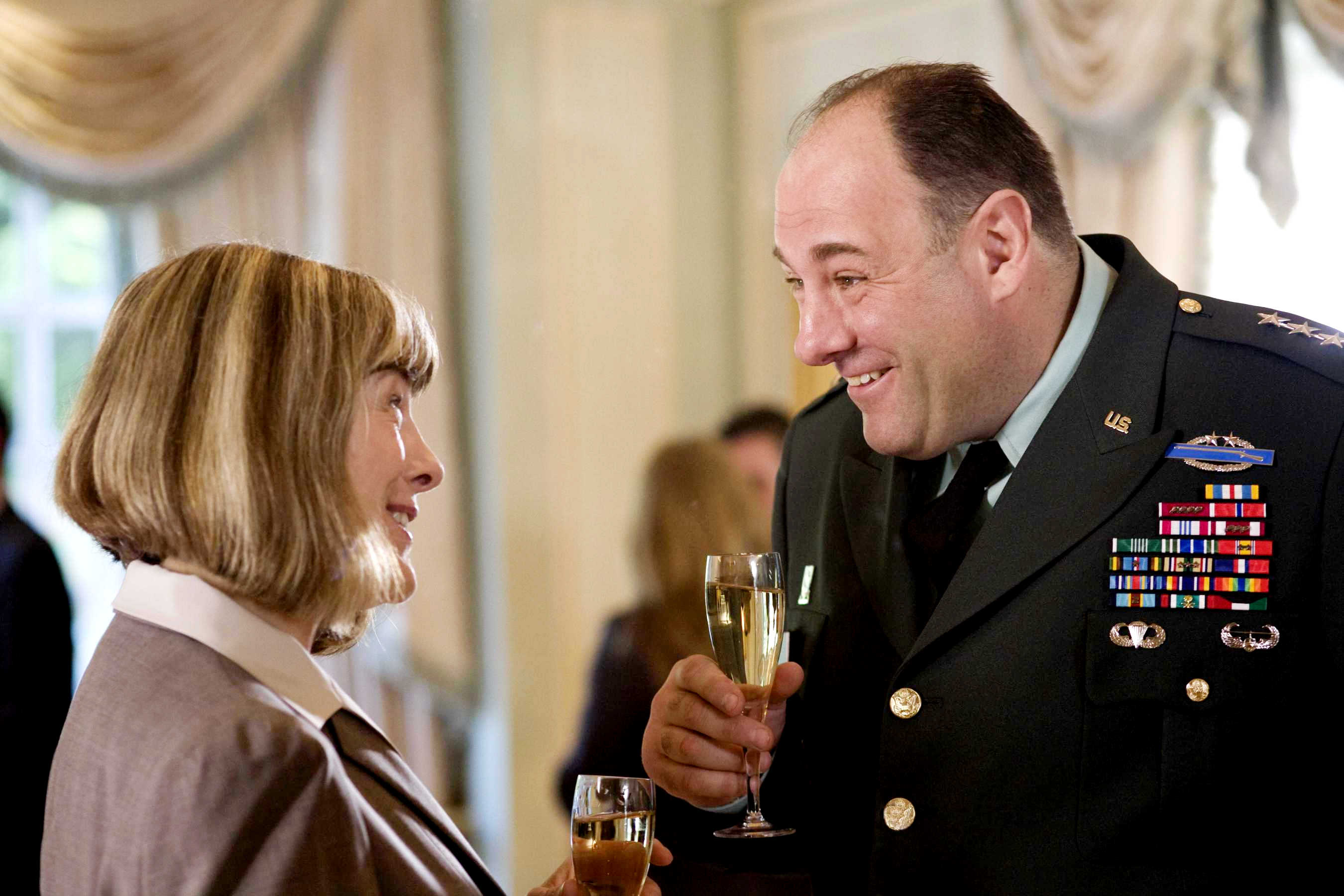
1. In the Loop: “Tobes, I don’t want to have to read you the Riot Act, but I am going to have to read you some extracts from the Riot Act, like: Section 1, Paragraph 1: Don’t leave your boss twisting in the wind and then burst in late, smelling like a pissed seaside donkey.” Even if I hadn’t moved back to DC this year for a ringside seat to the clusterfrak, Armando Ianucci’s In the Loop would’ve been at the top of my list. I’m not normally a huge laugher at movies, but this flick had me rolling.
Basically, In the Loop is Office Space for people in politics, and it’s a smart, wickedly funny entertainment. And like Judge’s film and The Big Lebowski, I expect it will enjoy a long, happy, and very quotable renaissance on DVD. If you find The Daily Show or Colbert Report at all enjoyable, this is a must-see. And, even if you don’t, well the choice Scottish swearing should get you through.

2. Moon: While Michael Bay, McG and their ilk tried to top each other with gimongous explosions this summer, Duncan Jones’ moody, low-key Moon just aimed to blow our minds. A throwback to the seventies big-think sci-fi that has fallen out of favor in the post-Star Wars-era, Moon‘s big special effect, other than Sam Rockwell, of course, was its clever ideas. And in a year of hit-or-miss (mostly miss) blockbusters, Rockwell’s quiet two-man show turned out to be the sci-fi extravaganza of 2009.
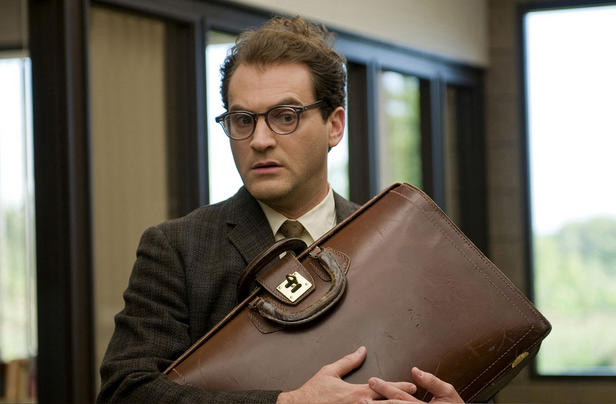
3. A Serious Man: Oy vey. This existential disquisition into wandering dybbuks, sixties Judaica, quantum mechanics, and Old Testament justice was yet another triumph for those devilishly talented brothers from Minnesota. The Job-like travails of Larry Gopnik introduced us to several colorful, Coenesque personages (Sy Ableman, Rabbi Nachtner) and offered vignettes (the Goy’s Teeth) and quotable philosophy (“Receive with simplicity everything that happens to you“) that cinephiles will ponder for awhile to come. The Coens abide.
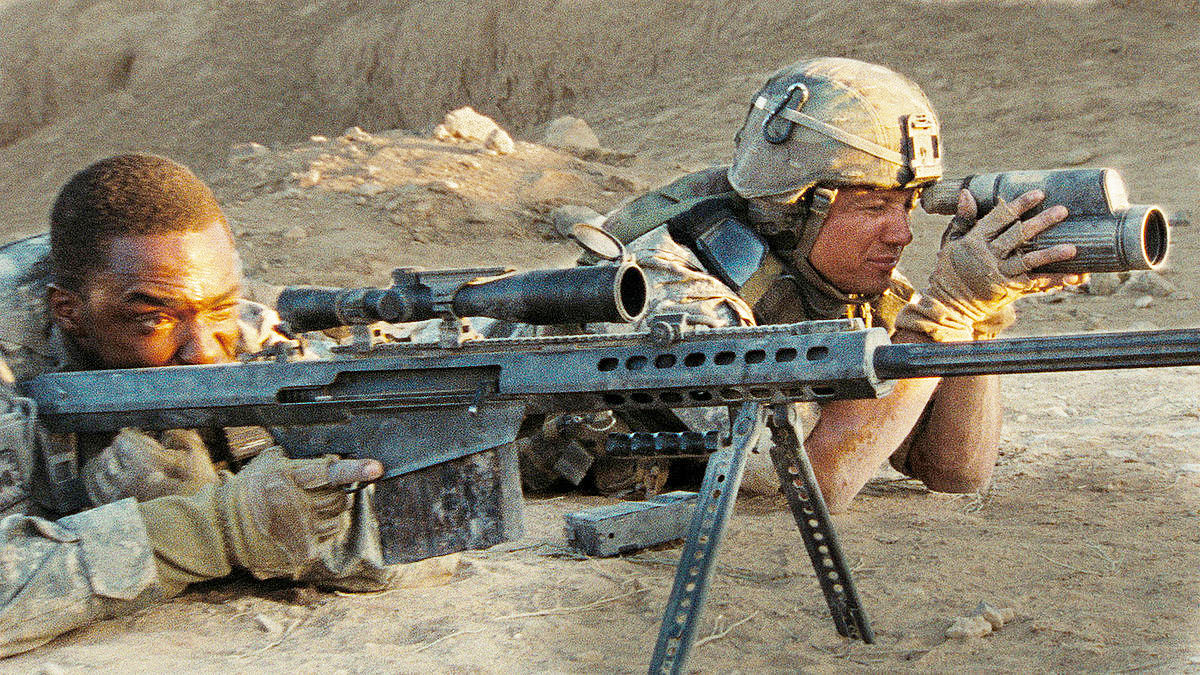
4. The Hurt Locker: Bombs away, and we’re not ok. Other than Modern Warfare 2 and Generation Kill, this immersive, nail-biting account of an IED team’s travails in the midst of the suck was the best pop culture simulator out there for feeling embedded in Iraq…and stuck at the wrong Baghdad street corner at just the wrong time. And with the tension ratcheting to uncomfortable levels in each of the ordnance disposal scenes, Kathryn Bigelow’s The Hurt Locker — sorry, King of the World — was the action movie of the year.

5. Coraline: In an auspicious year for both regular (see #10) and stop-motion (see #13) animation, Henry Selick’s adaptation of Neil Gaiman’s Coraline was the pick of the litter. It sorta got lost in the early-year shuffle, but Selick & Gaiman’s dark, twisted fairy tale delivered the goods, and hopefully it’ll find more life on DVD.
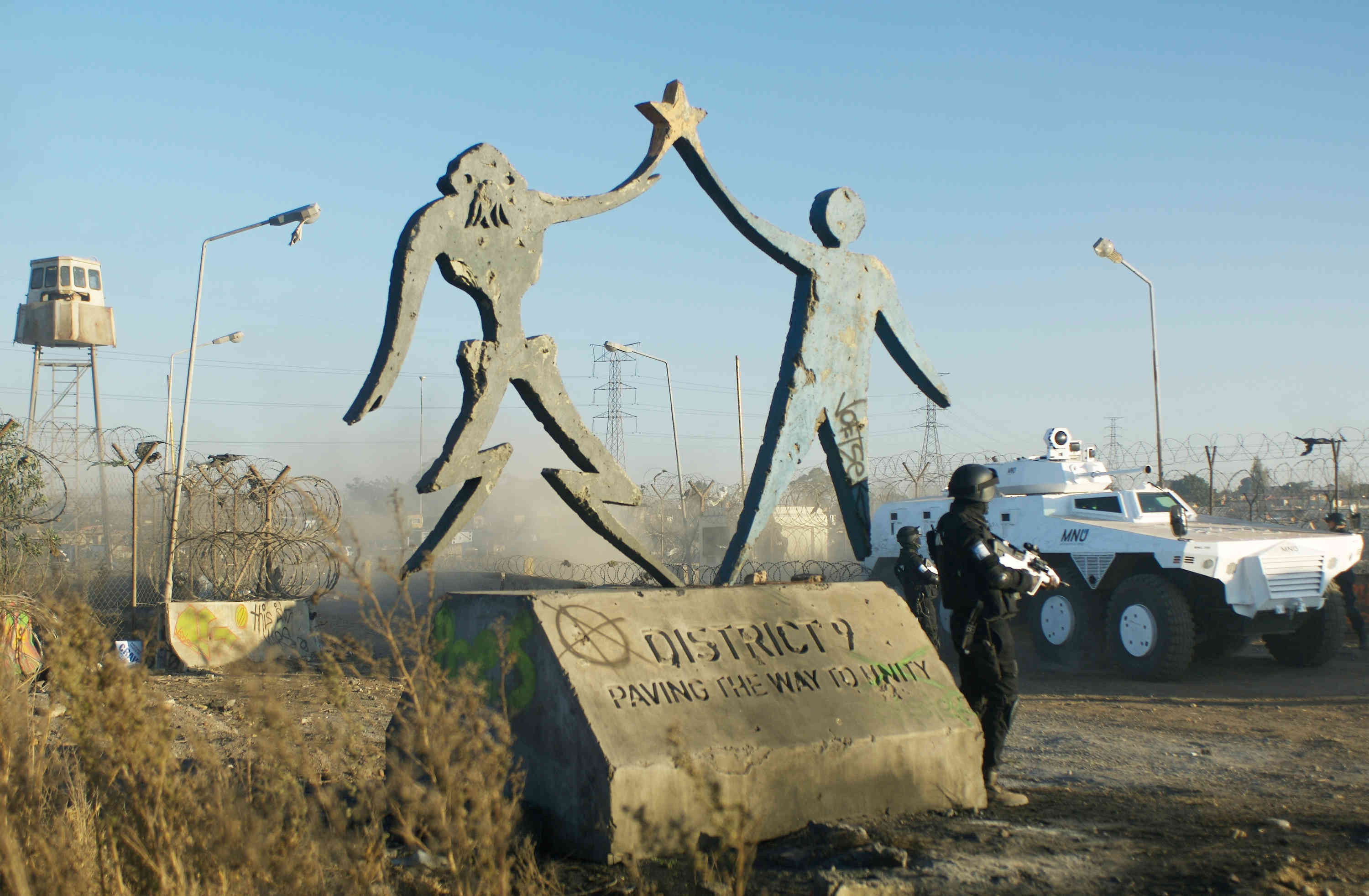
6. District 9: For those who find Moon a little too talky and slow, I direct you to Neil Blomkamp’s little (ok, $30 million) South African indie that could. Alien Nation meets Cry Freedom with healthy dollops of Cronenberg body horror and old-school Peter Jackson viscera-splatter, District 9 came out as more than the sum of its parts, and (with #8) was one of the most purely enjoyable films of the summer.
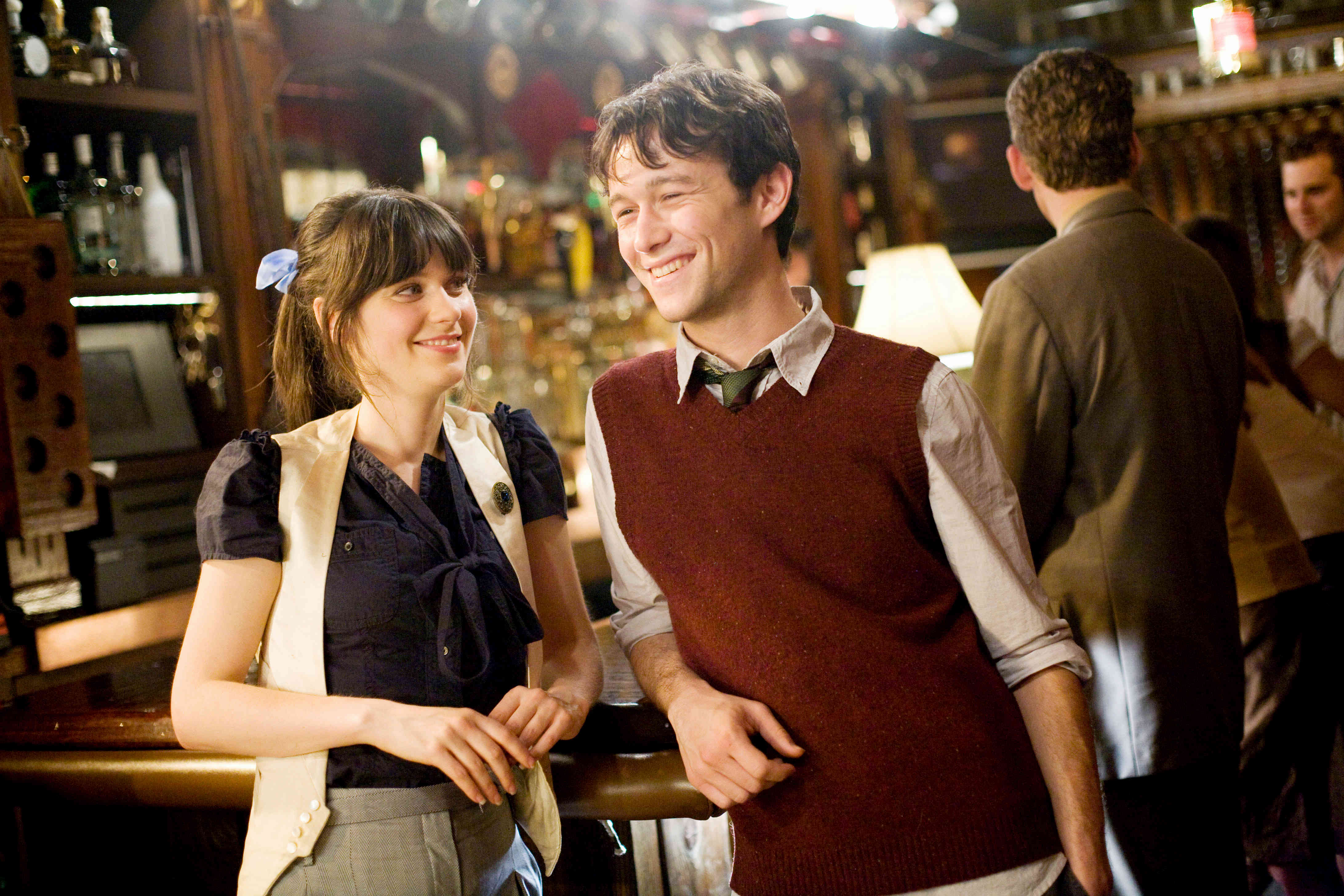
7. (500) Days of Summer: “This is a story of boy meets girl. The boy, Tom Hansen of Margate, New Jersey, grew up believing that he’d never truly be happy until the day he met The One. This belief stemmed from early exposure to sad British pop music and a total mis-reading of the movie ‘The Graduate’.” Speaking of said music, here’s a movie the early Elvis Costello would love. Sure, (500) Days is unabashedly for folks who’ve been on the wrong end of a break-up. But, even if it is ultimately Annie Hall-lite in a lot of ways, it had more truths to tell than most of the rom-coms out in any given year…combined.

8. Drag Me to Hell: Shaking off the Spidey 3 doldrums, Sam Raimi went back to his gross-out Evil Dead roots for this carnival concoction. Besides being easily the most explicitly anti-gypsy film since Borat, Drag Me to Hell was also, in its own way, as much of a Great Recession cautionary tale as Up in the Air. One hopes that when the Senate takes up financial services reform next year, our erstwhile reformers in that esteemed body will note what happened to Alison Lohman when she, against all better judgment, decided to do the bidding of the Banks.

9. Star Trek: There was admittedly a whole lotta stupid in J.J. Abrams’ Star Warsy revamp of the Star Trek franchise — Once exposed to the light, the movie’s basic premises completely fall apart. But, like the stomachache that accompanies eating too much candy, those regrets come later. In the moment, Star Trek was more fun than you can shake a stick at, and as solid and entertaining a franchise reboot as 2006’s Casino Royale. Let’s hope The Revenge of Khan or whatever it’s called turns out better than Quantum of Solace.
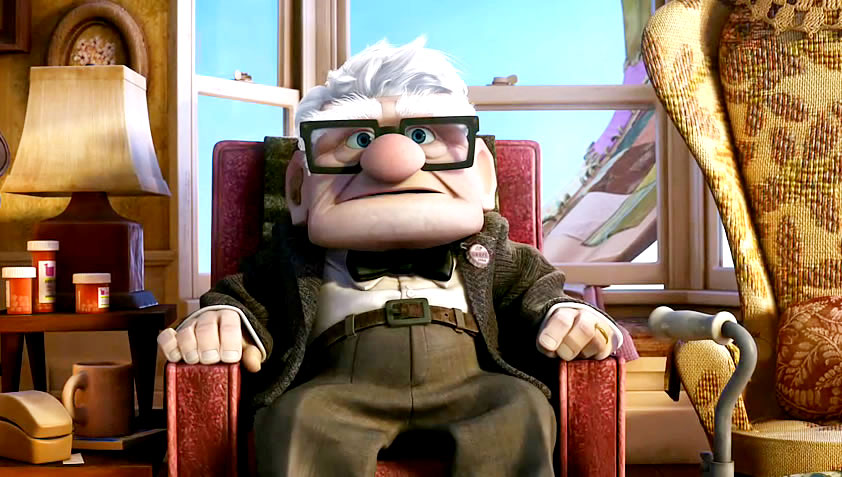
10. Up: If the movie were just the first ten-fifteen minutes, this might’ve been in the top five. But even more than WALL-E, the good stuff in Up is front-loaded. And, after the story of a lifetime ended a quarter hour in, I wasn’t much in the mood for talking dogs and big, funny birds (even birds named Kevin) anymore. Still, Pixar is Pixar, and Up carried their usual mark of quality.

11. The Damned United: Frost/Nixon for the futbol set, Tom Hooper’s ballad of Clough and Revie was a low-key character study that made up for an awkwardly-frontloaded bromance with another great performance by Michael Sheen and plenty of “Life in a Northern Town” local color to spare. You can practically smell the mud off the cleats in this one.

12. Duplicity: Perhaps I’m giving too many props to well-made breezy entertainments this year (see also Nos. 8 & 9). Nonetheless, Tony Gilroy’s Duplicity was a sleek espionage caper and a decently sexy love story that was all the more amusing because the stakes were so small. As it turns out, Clive Owen had just taken on evil corporations with a global reach a few weeks earlier in The International (a movie I caught on DVD, and which was most memorable for its Gunfight in the Guggenheim) — He’s more fun when he’s on the payroll.
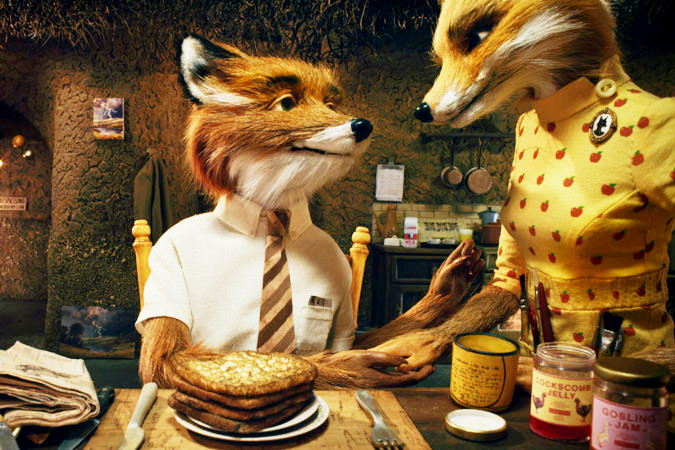
13. The Fantastic Mr. Fox: If you see one clever stop-motion adaptation of a sardonic children’s novel this year…well, see Coraline. Nonetheless, The Fantastic Mr. Fox was also one of the better entrants in the 2009 line-up. It was ultimately a little too Wes Anderson saccharine for my tastes, but, of course, your mileage may vary. And at least Fox didn’t wallow in the emo like, you know.
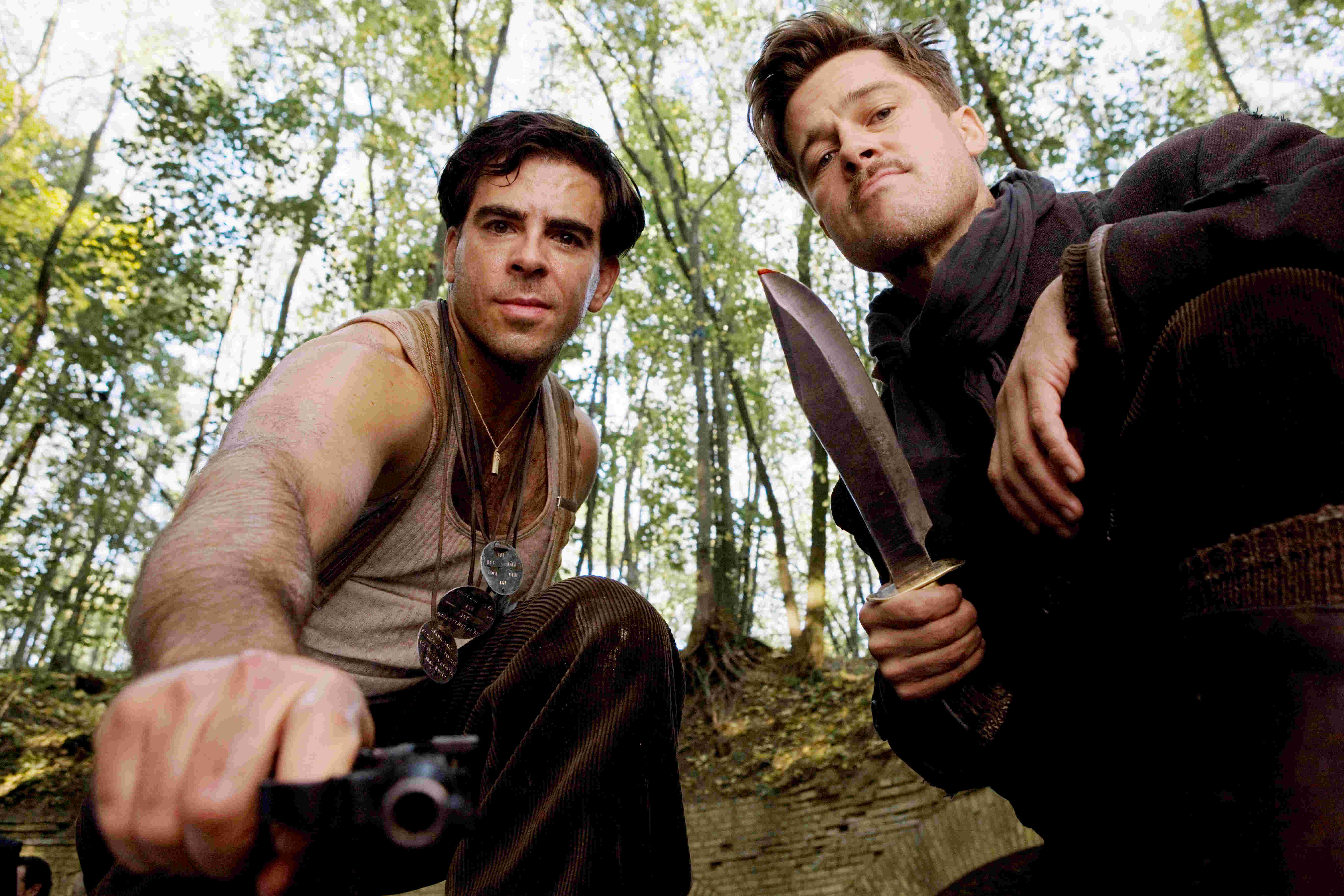
14. Inglourious Basterds: After a decade of languishing in the shallows, Quentin Tarantino found a bit of his old magic in this sprawling alternate history of WWII. Yes, it needed a good and ruthless editor, and some rather longish scenes don’t really work at all (I’m thinking mainly of Shoshanna’s lunch with Goebbels and Linda.) But at certain times — the basement cafe snafu, for example, or the memorable finale — Basterds is the best thing QT has done since Jackie Brown. Let’s hope he stays in form.
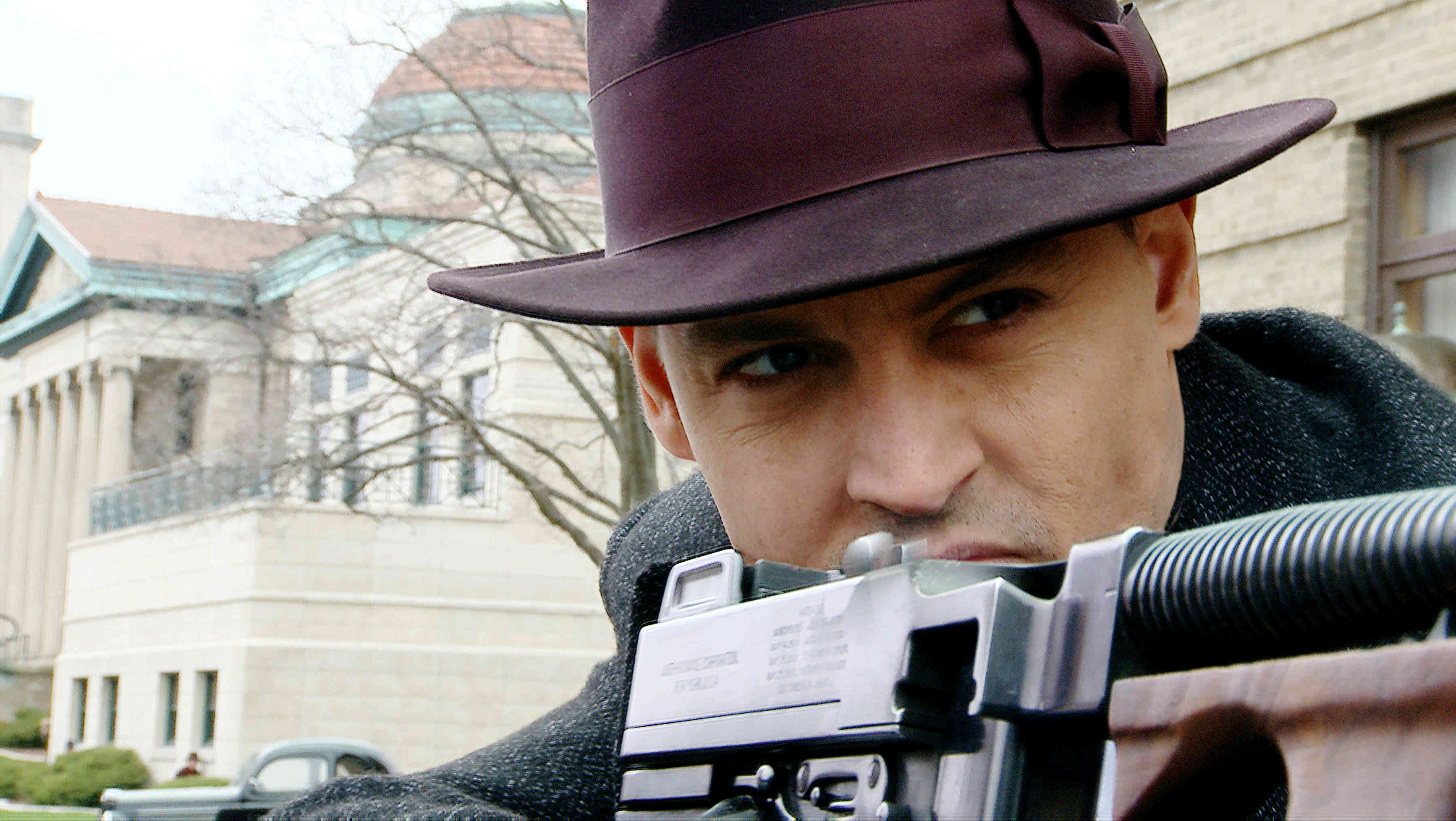
15. Public Enemies: Michael Mann’s high-def retelling of The Last Days of Dillinger was a strange one, alright. Like Basterds, it was long and languid and sometimes seemed to move without purpose. But, like Mann’s last grainy-digital foray into tales of manly men and the women they love, Miami Vice, Public Enemies has stuck with me ever since. Say what you will about the hi-def video aesthetic, it somehow seems to match Mann’s haunted, Hemingwayesque sense of poetry.
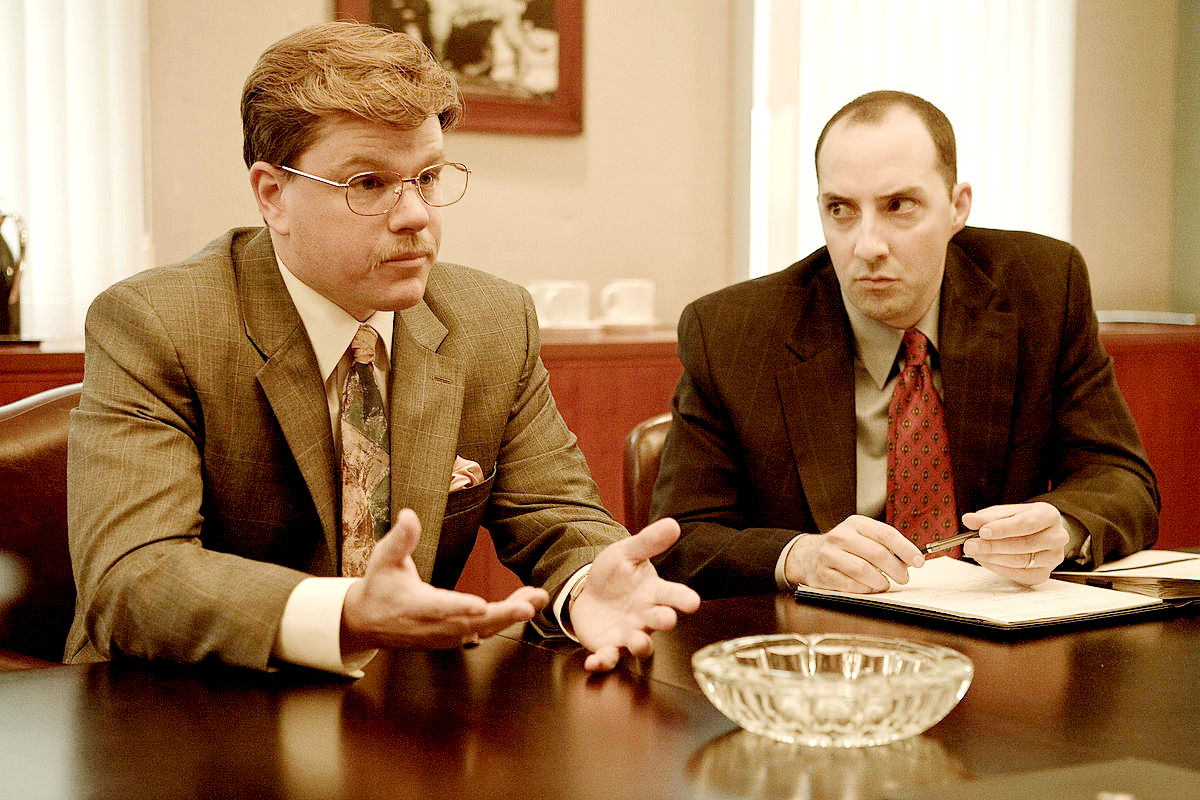
16. The Informant!: The tragedy of The Insider retold as farce, The Informant!, like many of Steven Soderbergh’s films, was experimental in a lot of ways. Some things worked (the ADM-buttery sheen); Others didn’t (the distractingly peppy Hamlisch score); Others still were hit-or-miss (the in-head bipolar voiceover). Nonetheless, The Informant! is mostly a success, and it’s good to see Soderbergh out there trying new things — I wish I’d gotten around to catching The Girlfriend Experience. (Ahem, the movie, that is. Sheesh, some people.)
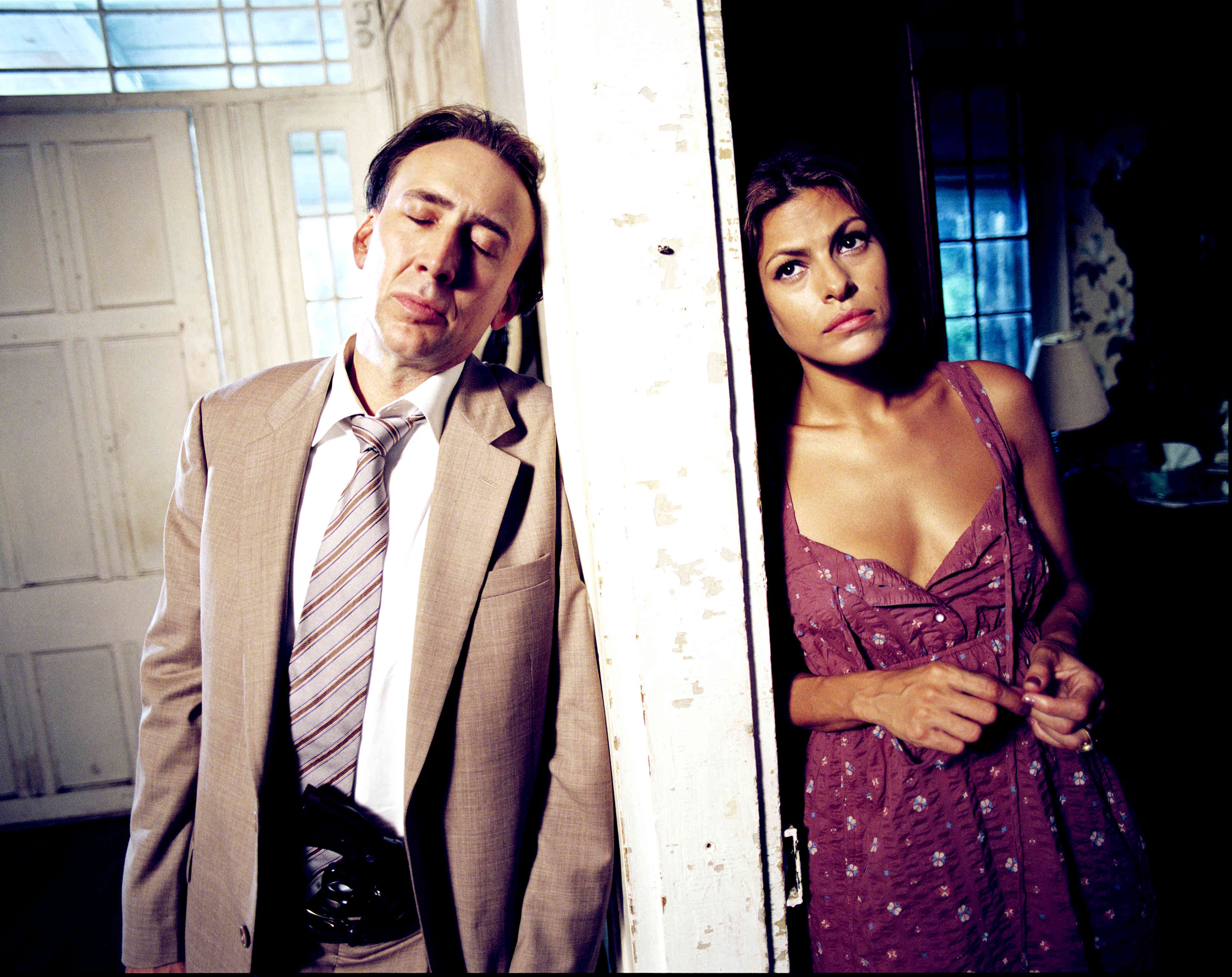
17. Bad Lieutenant: Port of Call New Orleans: I had definite doubts going in, but Werner Herzog’s Grand Theft Auto: New Orleans turned out to be a surprisingly fun gonzo trip. After years of hanging with the Kinski, good ole Werner sure knows his way around the crazy, and by pairing Nicholas Cage on a savage burn with hyperreal iguanas, voodoo breakdancers, and the like, he’s done Abel Ferrara’s Gloomy Gus version of this tale one better. There’s no Catholic angst for this Lieutenant — just reveling in sordidness…but then again, isn’t that the whole point of Carnival?
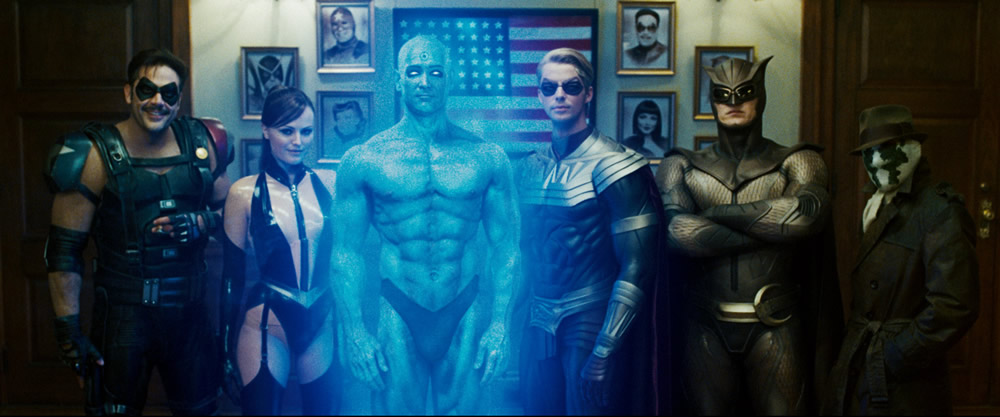
18. Watchmen: “At midnight, all the agents and the superhuman crews go and round up everyone who knows more than they do.” True, Zack Snyder’s attempt to recreate the Alan Moore graphic novel on film is flawed in a lot of ways. (The longer DVD version smooths out some of these issues while introducing others.) And I still wish the project had stayed in Paul Greengrass’ hands. But, give credit where it’s due — For all its many problems (most notably the fratboy-indulgences into “cool” violence), Snyder’s Watchmen got a lot of things right, from Dr. Manhattan sulking on Mars to Jackie Earle Haley’s turn as Rorschach. Snyder couldn’t match the degree of difficulty involved in the end, but Watchmen was still a worthy attempt.
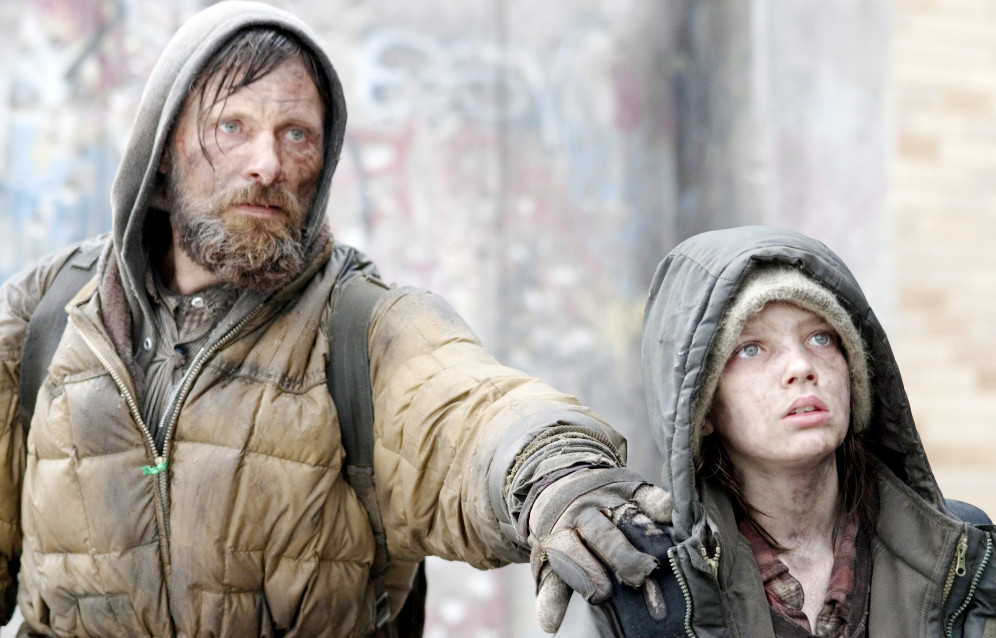
19. The Road: In the Future, There Will Be Cannibals: John Hillcoat’s film version of Cormac McCarthy’s dabbling in the apocalyptic form definitely captured the resonances of the book. And this is a quality production through and through, with solid performances by Viggo, the kid, Charlize Theron, and all of the HBO All-Stars (with particularly big ups to Robert Duvall.) Unfortunately, I didn’t think much of the book either, and in its monochromatic grimness, The Road never seems as memorable as Hillcoat’s earlier film, The Proposition. All work and no play makes Hobo Viggo somethin’ somethin’.
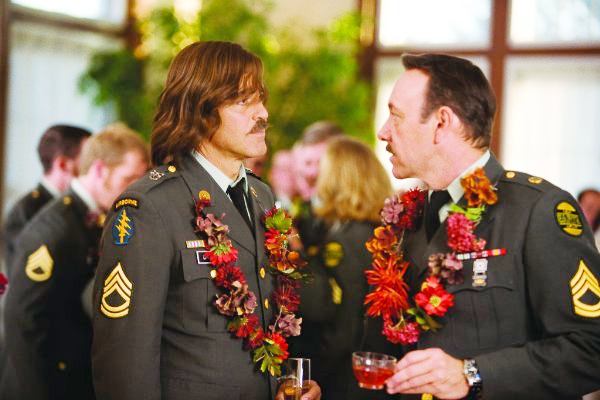
20. The Men Who Stare at Goats: I’m sure a lot of lists would’ve found room for Avatar or Up in the Air in their top twenty, and both have their merits (even if Avatar‘s are almost completely technical.) But if Avatar was too flat and Air too glib, The Men Who Stare at Goats was a frothy excursion that delivered on basically the terms it promised at the onset. Ok, there’s not much there there, but sometimes a couple of likable actors having an extended goof will go farther than Big, Oscar-Worthy Messages and World-Beating Tech. Hmmm, if you think about it, the “sparkly eye” technique probably would’ve gone over better with the Na’vi than all those Aliens-loaned cargo-loaders anyway. Score one for the First Earth Battalion.
Most Disappointing: Where the Wild Things Are, Terminator: Salvation
Worth a Rental: An Education, Avatar, Cold Souls, Eden (2006), Harry Potter and the Half-Blood Prince, The International, Paranormal Activity, Sherlock Holmes, A Single Man, Taken, Up in the Air, Zombieland
Don’t Bother: 2012, The Box, The Brothers Bloom, Extract, A Girl Cut in Two (2006), The Hangover, Invictus, Jennifer’s Body, State of Play, The Tiger’s Tail (2006), Whip It, World’s Greatest Dad
Best Actor: Sam Rockwell, Moon; Jeremy Renner, The Hurt Locker
Best Actress: Carey Mulligan, An Education
Best Supporting Actor: Christoph Waltz, Inglourious Basterds; Robert Duvall, The Road
Best Supporting Actress: Marion Cotillard, Public Enemies; Melanie Laurent, Inglourious Basterds
Unseen: 9, Nine, Adventureland, Angels & Demons, Amelia, Antichrist, Armored, Astro Boy, Black Dynamite, Blood: The Last Vampire, Bright Star, Brothers, Bruno, Capitalism: A Love Story, Cirque du Freak: The Vampire’s Assistant, Crank: High Voltage, Crossing Over, Everybody’s Fine, Funny People, Gentlemen Broncos, GI Joe, The Girlfriend Experience, Good Hair, The Education of Charlie Banks, The Great Buck Howard, Hunger, The Imaginarium of Doctor Parnassus, The Invention of Lying, It’s Complicated, Julie & Julia, Land of the Lost, The Limits of Control, , The Lovely Bones, I Love You Man, Me and Orson Welles, The Messenger, New York I Love You, Notorious, Observe & Report, Orphan, Pandorum, Pirate Radio, Ponyo, Precious, The Private Lives of Pippa Lee, The Proposal, Push, The Soloist, Surrogates, The Taking of Pelham1-2-3, Taking Woodstock, Thirst, The Time Traveler’s Wife, Transformers: Revenge of the Fallen, The Twilight Saga: New Moon, Two Lovers, The Ugly Truth, Whatever Works, X-Men Origins: Wolverine, Year One
2010: Alice in Wonderland, All Good Things, The American, The A-Team, The Book of Eli, Brooklyn’s Finest, Clash of the Titans, A Couple of Dicks, Daybreakers, The Expendables, Greenberg, The Green Hornet, Green Zone, Harry Potter and the Deathly Hallows Pt. 1, I Love You Phillip Morris, Inception, Iron Man 2, Jonah Hex, Kick-Ass, Knight & Day, The Last Airbender, Legion, The Losers, Percy Jackson & The Olympians: The Lightning Thief, Morning Glory, Predators, Prince of Persia: The Sands of Time, Red, Robin Hood, Salt, Season of the Witch, Shanghai, Shutter Island, The Sorcerer’s Apprentice, Toy Story 3, The Voyage of the Dawn Treader, Wall Street 2: Money Never Sleeps, The Wolf Man, Youth in Revolt, more needless ’80s remakes than you can shake a stick at. (Footloose, The Karate Kid, A Nightmare on Elm Street, Red Dawn), and…

TRON 2. 2010, y’all. It’s the future, and no mistake.
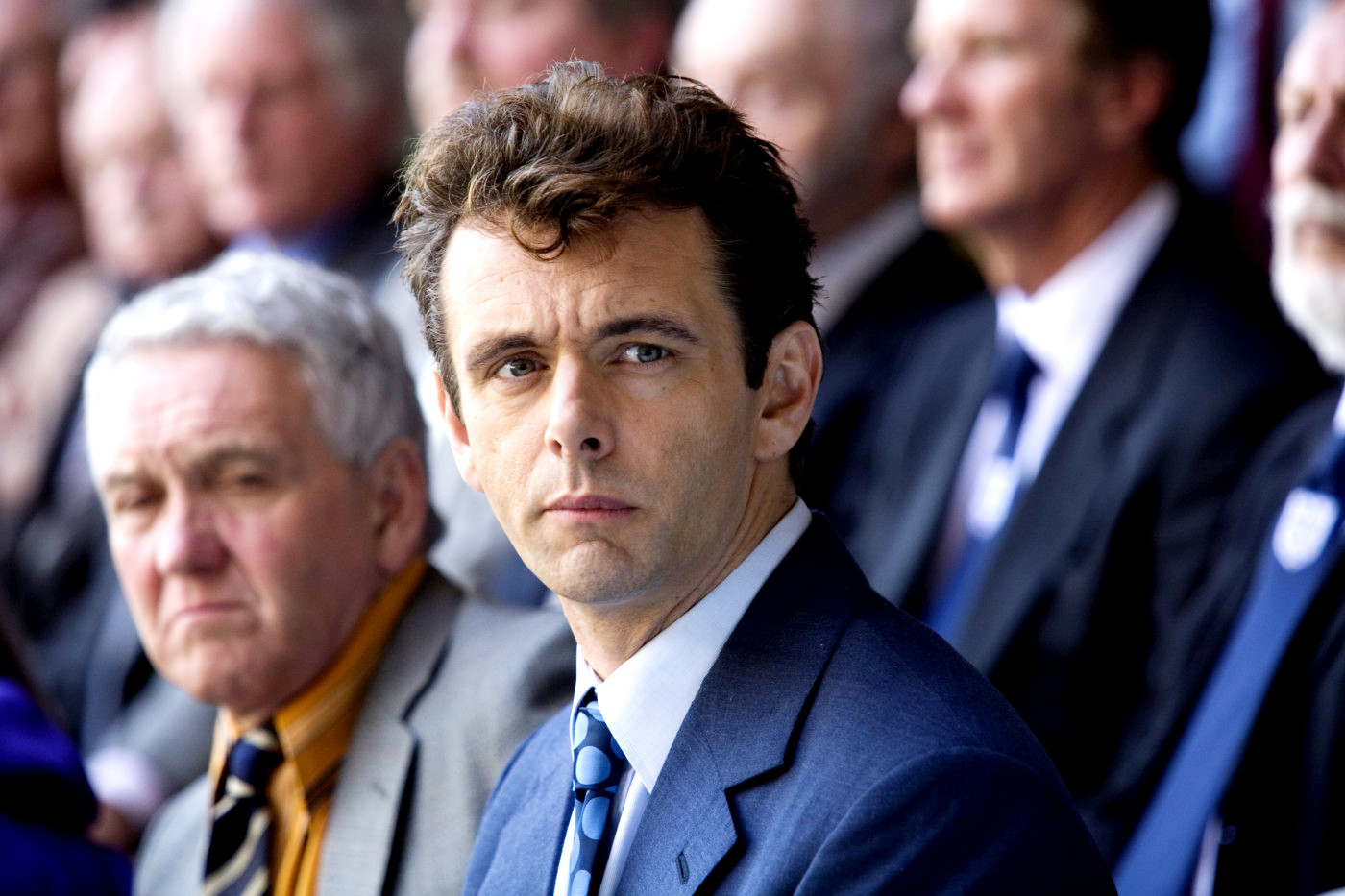
Now, I would consider myself a casual soccer fan, but, going in, I had no sense at all of this tale. As a 5-6 year-old in England a few years after these events, I liked Kevin Keegan and Liverpool, mainly, I think, ’cause he was a superstar who had my name. And, when I heard this movie was called The Damned United, I originally presumed it referred to current Yankees-like powerhouse Manchester United, not Leeds, who, it turns out, was the premier squad of the early seventies. (To be honest, when I hear the word “Leeds,” I usually tend to think “they’ve got us working in shifts!”)
All of which is to say that you don’t need to know the history here, or even be all that interested in soccer, I don’t think, to get a kick out of The Damned United. (In fact, there probably should have been more football in this film — there’s really not much coverage of the actual games throughout.) Rather, like Morgan’s earlier movies, this is less a sports movie (if anything, it’s the anti-Hoosiers) than another tale of clashing personalities. And, like Morgan’s last two flicks, Michael Sheen delivers with another engrossing bit of mimicry. His Brian Clough carries some of the flash and dazzle of David Frost, but Sheen has also taken on some definite Nixonian qualities here: Tricky Dick was an American football fan, true, but Brian Clough here possesses the same chip-on-the-shoulder drive to avenge minor slights; the same blue-collar work ethic, and the same Orthogonian loathing of (Kennedy/soccer) elites.
That would make the Kennedy of this story Don Revie (Colm Meaney), the winning manager of the Leeds dynasty, much-beloved by his city and his players, who moves to shape up the dismal English team when national duty calls in 1974. Surprisingly, Clough — a bit of a dark horse candidate — is announced as Revie’s replacement…and promptly starts pissing his new bosses and players off by demeaning the Leeds legacy on the telly. (Like Nixon vis-a-vis Kennedy, Clough is convinced, probably correctly, that Revie and his team “won dirty.”) Basically, Clough is a smarmy self-satisfied egotist from his first day in the gig, and one starts to wonder why he was ever considered for this position — It’s abundantly clear that the Leeds players, captained by Stephen Graham of Snatch and Public Enemies, consider him a first-rate wanker.
Flash-back to 1968, when Clough and his right-hand man Peter Taylor (Timothy Spall) are coaching the lowly Derby County F.C, and the Chairman of their Club (Jim Broadbent) seems perfectly content with bottom-feeding in the second division. (In English soccer, the major and minor leagues are fungible — the worst teams in the “first division” go down to the “second division;” the best teams move up. It’s a kind of awesome idea that American sports should adopt immediately — The Knicks would kill in the NBADL.) But, after a chance draw — you wouldn’t call it a friendly — against the mighty Leeds United, and a perceived snub at the match, Clough becomes a man possessed. He will bring Don Revie and his squad of thugs back down to Earth…or at least drive everyone around him crazy in the trying.
The rest of the story plays out like Godfather II, basically, with Clough’s rise with Derby told against his fall with Leeds, culminating (like The Queen and F/N) in the televised Clough/Revie mano-a-mano. As with those earlier movies, there’s not a lot of suspense throughout, but it’s all in the telling. (And good job by Tom Hooper in so well evoking the northern England of 1968-74. This entire movie has the gritty, working-class seventies feel of any number of wry and excellent Kinks songs.) A strange subplot involving the long-term bromance between Clough and Taylor, his talented #2, felt overwrought and belabored to me, particularly in the closing moments. But otherwise, The Damned United is another solid and entertaining outing by the Peter Morgan-Michael Sheen team. Steady on, lads, steady on.
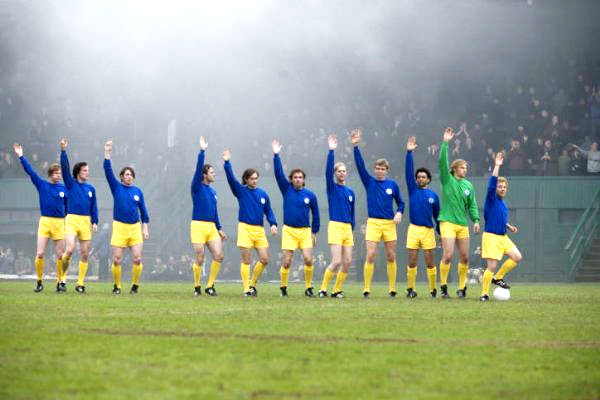
Happy New Year’s Eve to everyone..I’m celebrating in San Diego with old college friends and likely won’t update again until 2006. So, without further ado, here’s the 2005 movie round-up. Overall, it’s been a pretty solid year for cinema, and this is the first year in the past five where the #1 movie wasn’t immediately obvious to me. But, still, choices had to be made, and so…
[Note: The #1 movie of 2005 changed in early 2006: See the Best of 2006 list for the update…]
1. Syriana: I know Stephen Gaghan’s grim meditation on the global reach and ruthlessness of the Oil Trade rubbed some people the wrong way, but I found it a gripping piece of 21st century muckraking, in the venerable tradition of Ida Tarbell and Upton Sinclair. True, Christopher Plummer was a mite too sinister, but otherwise Syriana offered some of the most intriguing character arcs of the year, from morose CIA Field Agent George Clooney’s ambivalent awakening to corporate lawyer Jeffrey Wright’s courtship with compromise. In a year of well-made political films, among them Good Night, and Good Luck, Munich, Lord of War, and The Constant Gardener, Syriana was the pick of the litter.
2. Layer Cake: If X3 turns into the fiasco the fanboy nation is expecting with Brett Ratner at the helm, this expertly-crafted crime noir by Matthew Vaughn will cut that much deeper. Layer Cake not only outdid Guy Ritchie’s brit-gangster oeuvre in wit and elegance and offered great supporting turns by Michael Gambon, Kenneth Cranham, and Colm Meaney, it proved that Daniel Craig had the requisite charisma for Bond and then some (and that Sienna Miller is no slouch in the charisma department either.)
3. Ballets Russes: Penguins and comedians, to the wings — The lively survivors of the Ballets Russes are now on center stage. Like the best in dance itself, this captivating, transporting documentary was at once of the moment and timeless.
4. Good Night, and Good Luck: Conversely, anchored by David Strathairn’s wry channeling of Edward R. Murrow, George Clooney’s second film (and second appearance on the 2005 list) couldn’t have been more timely. A historical film that in other hands might have come off as dry, preachy edutainment, Good Night, and Good Luck instead seemed as fresh and relevant as the evening news…well, that is, if the news still functioned properly.
5. Batman Begins: The Dark Knight has returned. Yes, the samurai-filled first act ran a bit long and the third-act train derailing needed more oomph. Still, WB and DC’s reboot of the latter’s second biggest franchise was the Caped Crusader movie we’ve all been waiting for. With help from an A-list supporting cast and a Gotham City thankfully devoid of Schumacherian statuary, Chris Nolan and Christian Bale brought both Batman and Bruce Wayne to life as never before, and a Killing Joke-ish Batman 2 is now on the top of my want-to-see list.
6. Harry Potter and the Goblet of Fire: As I said in my original review, I initally thought Cuaron’s Azkhaban couldn’t be topped. But give Mike Newell credit: Harry’s foray into Voldemortish gloom and teenage angst was easily the most compelling Potter film so far. Extra points to Gryffindor for Brendan Gleeson’s more-than-slightly-bent Mad-Eye Moody, and to Slytherin for Ralph Fiennes’ serpentine cameo as He-Who-Must-Not-Be-Named.
7. King Kong: I had this film as high as #2 for awhile, and there are visual marvels therein that no other movie this year came close to offering, most notably Kong loose in Depression-Era New York City. But, there’s no way around it — even given all the B-movie thrills and great-ape-empathizing that PJ offers in the last 120 minutes, the first hour is close to terrible, which has to knock the gorilla down a few notches.
8. Capote: When it comes to amorality for artistry’s sake, Jack Black’s Carl Denham ain’t got nothing on Philip Seymour Hoffman’s Truman Capote. I think it’d be awhile before I want to watch this movie again, but, still, it was a dark, memorable trip into bleeding Kansas and the writerly id.
9. Sin City: One of the most faithful comic-to-film adaptations on celluloid also made for one of the more engaging and visually arresting cinematic trips this year. I don’t know if the look and feel of Sin City can sustain a bona fide franchise, but this first outing was a surprisingly worthwhile film experience (with particular kudos for Mickey Rourke’s Marv.)
10. Munich: I wrote about this one at length very recently, so I’ll defer to the original review.
11. Brokeback Mountain: A beautifully shot and beautifully told love story, although admittedly Ang Lee’s staid Brokeback at times feels like transparent Oscar bait.
12. Lord of War: Anchored by Nicholas Cage’s wry voiceover, Andrew Niccol’s sardonic expose of the arms trade was the funniest of this year’s global message films (That is, if you like ’em served up cold.)
13. The Squid and the Whale: Speaking of which, The Squid and the Whale made ugly, embittered divorce about as funny as ever it’s likely to get, thanks to Jeff Daniels’ turn as the pretentious, haunted Bernard Berkman.
14. Star Wars Episode III: Revenge of the Sith: Thank the Force for small kindnesses: George Lucas put the Star Wars universe to bed with far and away his best outing of the prequels. The film flirts dangerously with the Dark Side, particularly in the “let’s take a meeting” second act, but for the most part Sith felt — finally — like a return to that galaxy long ago and far, far away.
15. A History of Violence: I think David Cronenberg’s most recent take on vigilantism and misplaced identity was slightly overrated by most critics — When you get down to it, the film was pretty straightforward in its doling out of violent fates to those who most deserved them. Still, solid performances and Cronenberg’s mordant humor still made for a far-better-than-average night at the movies.
16. Walk the Line: Despite the great performances by Joaquin Phoenix and Reese Witherspoon, Walk the Line ultimately seemed too much of a by-the-numbers biopic to do the Man in Black full credit. But, definitely worth seeing.
17. In Good Company (2004): Paul Weitz’s sweet folktale of synergy, downsizing, and corporate obsolescence was too charitable and good-natured to think ill of any of its characters, and I usually prefer more mordant fare. Nevertheless, the intelligently-written IGC turned out to be a quality piece of breezy pop filmmaking.
18. The Constant Gardener: Another very good film that I still thought was slightly overrated by the critics, Fernando Meirelles’ sophomore outing skillfully masked its somewhat iffy script with lush cinematography and choice Soderberghian editing.
19. Primer (2004): A completely inscrutable sci-fi tone poem on the perils of time travel. Kevin and I saw it twice and still have very little clue as to what’s going most of the time — but I (we?) mean that in the best way possible.
20. The Chronicles of Narnia: The Lion, the Witch, and the Wardrobe: The Chronic-what? Andrew Adamson’s retelling of C.S. Lewis’s most popular tome lagged in places, and the two older kids were outfitted with unwieldy character arcs that often stopped the film dead, but it still felt surprisingly faithful to the spirit of Narnia, Christianized lion and all.
Most Disappointing: The Fantastic Four, which I finally saw on the plane yesterday — One of Marvel’s A-List properties is given the straight-to-video treatment. From the Mr. Fantastic bathroom humor to the complete evisceration of Dr. Doom, this movie turned out just as uninspired and embarrassing as the trailers suggested. Runner-Up: The Brothers Grimm. Terry Gilliam’s long-awaited return wasn’t exactly a return-to-form. But, hey, at least he got a movie made, and Tideland is just around the corner.
Most Variable: Hitchhiker’s Guide to the Galaxy: I still haven’t figured out how I feel about this one. I liked it quite a bit upon first viewing, but it didn’t hold up at all the second time around. Still, the casting feels right, and I’d be up for The Restaurant at the End of the Universe, provided they turn up the Ford-and-Zaphod shenanigans and turn down the forced Arthur-and-Trillian romance.
Worth a Rental: Constantine, Aliens of the Deep, Me and You and Everyone We Know, Charlie and the Chocolate Factory, The Island, March of the Penguins, The Aristocrats,Tim Burton’s Corpse Bride, Jarhead, Sarah Silverman: Jesus is Magic, The Ice Harvest, War of the Worlds
Ho-Hum: Inside Deep Throat, The Jacket, Million Dollar Baby (2004), The Ring 2, Kingdom of Heaven, Unleashed, Mr. & Mrs. Smith,
Aeon Flux
Best Actor: Philip Seymour Hoffman, Capote; Eric Bana, Munich; Heath Ledger, Brokeback Mountain; David Straitharn, Good Night, and Good Luck
Best Actress: Reese Witherspoon, Walk the Line; Naomi Watts, King Kong
Best Supporting Actor: Jeff Daniels, The Squid and the Whale; George Clooney, Syriana; Brendan Gleeson, Harry Potter and the Goblet of Fire
Best Supporting Actress: Maria Bello, A History of Violence; Tilda Swinton, The Chronicles of Narnia
Unseen: The 40-Year-Old Virgin, Bee Season, Broken Flowers, Cache, Casanova, Cinderella Man, Crash, Enron: The Smartest Guys in the Room, Grizzly Man, Gunner Palace, Head On, Hustle & Flow, Junebug, Match Point, The New World, Nine Lives, Pride and Prejudice, Serenity (although I watched all of Firefly last week), Shopgirl, The Three Burials of Melquiades Estrada, Wallace and Gromit: The Curse of the Were-Rabbit, Wedding Crashers
2006: Frankly, the line-up doesn’t look too exciting at the moment. Nevertheless, 2006 will bring A Scanner Darkly, Casino Royale, The Da Vinci Code, Flags of our Fathers, The Good German, The Inside Man, Marie Antoinette, M:I III, Pirates of the Caribbean 2, Snakes on a Plane (!!), Southland Tales, Superman Returns, Tristam Shandy, V for Vendetta, and X3.
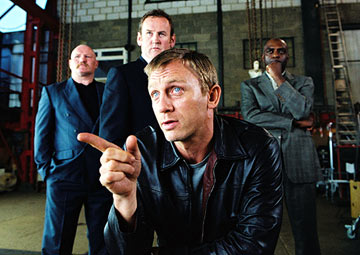 Disgruntled supporters of mutantkind, take heart: X3 is in very good hands. I caught Matthew Vaughn’s Layer Cake this afternoon, and it’s a smart, stylish, and sublimely smooth British crime film that does Guy Ritchie’s Lock, Stock, and Two Smoking Barrels and Snatch one better. Well, ok, Layer Cake isn’t as laugh-out-loud funny as Lock Stock can be at times, but it’s much cleverer than Snatch and, frankly, better-made. And, for that matter, it takes less joy in violence for its own sake than Ritchie’s oeuvre (one grisly scene set to Duran Duran’s “Ordinary World” notwithstanding.) In fact, in terms of tone, Cake is probably more akin to Jonathan Glazer’s Sexy Beast.
Disgruntled supporters of mutantkind, take heart: X3 is in very good hands. I caught Matthew Vaughn’s Layer Cake this afternoon, and it’s a smart, stylish, and sublimely smooth British crime film that does Guy Ritchie’s Lock, Stock, and Two Smoking Barrels and Snatch one better. Well, ok, Layer Cake isn’t as laugh-out-loud funny as Lock Stock can be at times, but it’s much cleverer than Snatch and, frankly, better-made. And, for that matter, it takes less joy in violence for its own sake than Ritchie’s oeuvre (one grisly scene set to Duran Duran’s “Ordinary World” notwithstanding.) In fact, in terms of tone, Cake is probably more akin to Jonathan Glazer’s Sexy Beast.
Layer Cake centers on cocaine dealer Daniel Craig (burnishing his possible Bond credentials), a consummate smooth operator who treats his criminal enterprise like a business and, as per the usual, is just looking forward to an early retirement around the corner. But his best-laid plans are interrupted by two ugly developments: 1) His boss Jimmy (Kenneth Cranham) enlists him to track down the junkie daughter of even bigger crime-lord Eddie Temple (Michael Gambon, relishing the dark side), and 2) a loose cannon flunky known as the Duke (Jamie Foreman of I’ll Sleep When I’m Dead and Roman Polanski’s forthcoming Oliver Twist) has just rolled in from Amsterdam trying to unload a million doses of Ecstasy (a drug haul with a nefarious history of its own.)
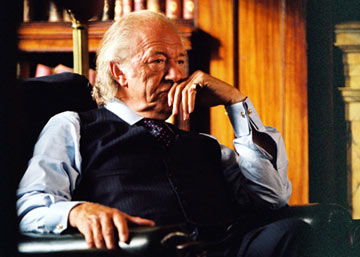 The rest of the movie consists of Craig trying to navigate the increasingly narrow straits between these two troubles, with the occasional aid of muscle Colm Meaney, middle-man George Harris, and a host of other ne’er-do-wells. Essentially, you know the drill — this is a puzzle film in which you’ll have to listen carefully and learn to distinguish between various delinquents with names like Tiptoes, Kinky, Slasher and Shanks. And, while the final few grifts just get a bit too big to be believable, for the most part the story holds together with intelligence and verve, in no small part to Daniel Craig, who’s a magnetic presence here, and Matthew Vaughn, who displays a crisp, confident direction that’s all the more impressive for being showy without ever seeming flashy. To him, his X-Men.
The rest of the movie consists of Craig trying to navigate the increasingly narrow straits between these two troubles, with the occasional aid of muscle Colm Meaney, middle-man George Harris, and a host of other ne’er-do-wells. Essentially, you know the drill — this is a puzzle film in which you’ll have to listen carefully and learn to distinguish between various delinquents with names like Tiptoes, Kinky, Slasher and Shanks. And, while the final few grifts just get a bit too big to be believable, for the most part the story holds together with intelligence and verve, in no small part to Daniel Craig, who’s a magnetic presence here, and Matthew Vaughn, who displays a crisp, confident direction that’s all the more impressive for being showy without ever seeming flashy. To him, his X-Men.